#marian lancaster
Text
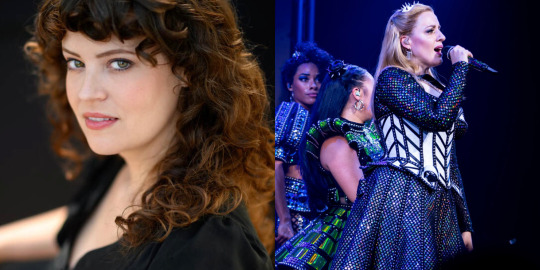
Six - Emily Rohm (she/they) as Jane Seymour, requested by @moth-loves-broadway
Birthday: Unknown
Birth Place: Unknown
Theatre credits include: Jane Doe (Ride the Cyclone), Marian Paroo (The Music Man), Belle (Beauty and the Beast), Mrs. Lancaster (Groundhog Day), Mary Poppins (Mary Poppins), Johanna Barker (Sweeney Todd: The Demon Barber of Fleet Street), Arminy/Understudy Julie Jordan (Carousel), Grace Farrell (Annie)
(Pictured on the right is Abby Mueller, who played the role in the first North American tour and Broadway productions)
Credits: Rob Riddle, Rebecca J Michelson
#six the musical#ride the cyclone#the music man#beauty and the beast#groundhog day#mary poppins musical#sweeney todd the demon barber of fleet street#carousel musical#annie the musical#emily rohm#jane seymour#jane doe#jane doe rtc#marian paroo#belle#princess belle#mrs lancaster#mary poppins#johanna barker#julie jordan#grace farrell
46 notes
·
View notes
Text
Margaret of Anjou’s visit to Coventry [in 1456], which was part of her dower and that of her son, Edward of Lancaster, was much more elaborate. It essentially reasserted Lancastrian power. The presence of Henry and the infant Edward was recognised in the pageantry. The ceremonial route between the Bablake gate and the commercial centre was short, skirting the area controlled by the cathedral priory, but it made up for its brevity with no fewer than fourteen pageants. Since Coventry had an established cycle of mystery plays, there were presumably enough local resources and experience to mount an impressive display; but one John Wetherby was summoned from Leicester to compose verses and stage the scenes. As at Margaret’s coronation the iconography was elaborate, though it built upon earlier developments.
Starting at Bablake gate, next to the Trinity Guild church of St. Michael, Bablake, the party was welcomed with a Tree of Jesse, set up on the gate itself, with the prophets Isaiah and Jeremiah explaining the symbolism. Outside St. Michael’s church the party was greeted by Edward the Confessor and St. John the Evangelist; and proceeding to Smithford Street, they found on the conduit the four Cardinal Virtues—Righteousness (Justice?), Prudence, Temperance, and Fortitude. In Cross Cheaping wine flowed freely, as in London, and angels stood on the cross, censing Margaret as she passed. Beyond the cross was pitched a series of pageants, each displaying one of the Nine Worthies, who offered to serve Margaret. Finally, the queen was shown a pageant of her patron saint, Margaret, slaying the dragon [which 'turned out to be strictly an intercessor on the queen's behalf', as Helen Maurer points out].
The meanings here are complex and have been variously interpreted. An initial reading of the programme found a message of messianic kingship: the Jesse tree equating royal genealogy with that of Christ had been used at the welcome for Henry VI on his return from Paris in 1432. A more recent, feminist view is that the symbolism is essentially Marian, and to be associated with Margaret both as queen and mother of the heir rather than Henry himself. The theme is shared sovereignty, with Margaret equal to her husband and son. Ideal kingship was symbolised by the presence of Edward the Confessor, but Margaret was the person to whom the speeches were specifically addressed and she, not Henry, was seen as the saviour of the house of Lancaster. This reading tips the balance too far the other way: the tableau of Edward the Confessor and St. John was a direct reference to the legend of the Ring and the Pilgrim, one of Henry III’s favourite stories, which was illustrated in Westminster Abbey, several of his houses, and in manuscript. It symbolised royal largesse, and its message at Coventry would certainly have encompassed the reigning king. Again, the presence of allegorical figures, first used for Henry, seems to acknowledge his presence. Yet, while the message of the Coventry pageants was directed at contemporary events it emphasised Margaret’s motherhood and duties as queen; and it was expressed as a traditional spiritual journey from the Old Testament, via the incarnation represented by the cross, to the final triumph over evil, with the help of the Virgin, allegory, and the Worthies. The only true thematic innovation was the commentary by the prophets.
[...] The messages of the pageants firmly reminded the royal women of their place as mothers and mediators, honoured but subordinate. Yet, if passive, these young women were not without significance. It is clear from the pageantry of 1392 and 1426 in London and 1456 in Coventry that when a crisis needed to be resolved, the queen (or regent’s wife) was accorded extra recognition. Her duty as mediator—or the good aspect of a misdirected man—suddenly became more than a pious wish. At Coventry, Margaret of Anjou was even presented as the rock upon which the monarchy rested. [However,] a crisis had to be sensed in order to provoke such emphasis [...]."
-Nicola Coldstream, "Roles of Women in Late Medieval Civic Pageantry," "Reassessing the Roles of Women as 'Makers' of Medieval Art and Culture"
#historicwomendaily#margaret of anjou#my post#henry vi#yeah I don't necessarily agree with Laynesmith's interpretation (that it was essentially Marian with an emphasis on shared sovereignty)#which she herself says is 'admittedly very speculative'#as this book points out that interpretation tips the balance too far on the other side and has a somewhat selective reading#It's also important to remember that this interpretation was not really reflected across wider Lancastrian propaganda at the time#which isn't really talked about - let alone emphasized - as much by historians but remained focused on the King#For example: look at the pro-Lancastrian poem 'The Ship of State' which hails Henry VI as a 'noble shyp made of good tree'#and emphasizes how he was widely supported and defended by many great Lancastrian lords and the crown prince#but not Margaret who was entirely absent#also look at the book 'Knyghthode and Bataile' (presented to Henry) and Fortescue's various pro-Lancastrian texts in the 1460s#even the recording of that Yorkist trial which was iirc reported in the 1459 attainder#all of these were entirely conventional and highlighted the presence and importance of the King. Margaret was not emphasized.#so either the Lancastrians were impossibly inconsistent about what message they actually wanted to convey about the role of their own queen#or the Coventry pageants were not actually meant to emphasize Margaret in the lieu of Laynesmith's interpretation#and would not have been viewed in such a manner by contemporaries#I think we should also keep in mind that we don't really know what Henry VI's condition was like at the time of MoA's entry to Coventry#we know he had been injured in St. Albans and had only just recovered from his second illness#this is especially important to consider since we know he had also arrived at Coventry before Margaret but much more discreetly#and was not welcomed by any pageants that we know of. This is VERY unusual and can be best explained if we consider the fact that he#may have simply not been in the right state (be it physical or state of mind) for it at the time#in which case the pageants for Margaret should be viewed as more of a improvisation/cover-up/temporary measure to bolster prestige#or Henry may have deliberately taken a more discreet role to emphasize the position of his heir - especially important after the long wait#imo I think Kipling's interpretation (ie: that they addressed Margaret but really referenced the prince & heir) makes a lot more sense:#'Coventry [...] regarded Margaret's entry as a kind of triumph-by-proxy: the Queen entered the city but Coventry received its Prince'#though I think he tends to view Margaret as more of a cipher (and has a very questionable view of Henry VI) which I also don't agree with.#The pageants very much DID focus on and reference her but they most prominently emphasized her 'motherhood and duties as queen'#ie: I think Kipling and Laynesmith tip too far on opposite sides and I think this interpretation takes the most realistic middle ground
9 notes
·
View notes
Photo

#princess dream#sailor moon#bishoujo senshi sailor moon#pretty guardian sailor moon#Dark Kingdom#robin hood#marian lancaster#robin hood no daibouken#maid marian#princess#youma
17 notes
·
View notes
Text
The fact that my live fc did Marian Hawke is English born only makes her that much more perfect. Especially since the Hawkes would be English born in a non fantasy setting.
#[ out of character. ] a raft fit for a queen#[ marian hawke ] what earth shattering matter requires my attention this time?#[ I really need to figure out what region though - my auto response is Lancaster but .. I also want to read into it more ]#[ I think Claire is from Manchester but Marian’s could claim is from Lancachire??? I THINK I need to check ]#[ anyhow Marian is English and her fc is perfect ]
2 notes
·
View notes
Text
Thursday 14 April 1836
7 50
11 55
no kiss Robert Mann sent for me to the rockwork himself + 3 and 8 of Freeman’s men there - read prayers (as usual of late) to A- and out at 8 40 for ½ hour - breakfast at 9 10 to 10 - then out again at the rock-work - till the men’s dinner at 12 - damp morning and small drizzling rain now and then - so thick at noon, thought the afternoon going to turn out wet, so set the men to work again in ½ hour at 12 ½ - came in to A- for a few minutes at 2 - she had been at Cliff Hill and sent for me - Mr. Parker at Harrogate but Mr. Adam answered A-‘s note of this morning and said he would come at 4 ½ this afternoon - with the men again till A- sent for me to Mr. Adam at 4 ¾ - he took down instructions for the coal-lease of the Bouldshaw coal - Mrs. Lancashire’s stone near Landimere not yet sold - Mr. A- brought old Washington’s deposition respecting the Water Lane well - said he has got a copy of the Reporter’s notes of Mr. Rawson’s speech from the bench - to let us have them tomorrow morning - I said it was not justice that was done about the well - said Mr. R-‘s speech was not likely to give A- any particular pleasure - mentioned his colliers smoking out my people with assa foetida - if I could get hold of Mr. R- for all this I would - if I did not, it would be because he was too ingenious for me - mentioned his keeping back a witness at Lancaster and getting £10,000 by it - I could hardly doubt the authority from which I had heard this - but begged Mr. A- to remember I only said this to him - not intending it to go farther - said whatever might happen, I would not put Mr. Parker in collision with Mr. R- Mr. P- had told me, Mr. R- was a bad person to have against one, and had said speaking of Pickells, he, (Mr. Parker) was not so independent a man as Pickells - I thought Mr. A- did not much relish my remark - about ½ hour with A- and Mr. A- then with the men again till after 6 - set today the little mere-stone and the high pointed one that finish the low west side of the rock-work and set the 5 stones forming the whole west side of the pool from the Portugal laurel to the intended drain-mouth - and gave a sovereign to Freeman’s man Whitley to drink for himself and the 7 more that have been here, and the ½ dozen or more that have worked at Whiskum quarry getting the stones - the sheers (3 legs) to go away tomorrow - Mr. F- to send for them - what remains to be done Robert Mann and his men can finish - had Mr. Husband -settled with him - paid him for the last 12 weeks up to Saturday last the 9th instant etc dinner at 7 - coffee - A-‘s French - with my aunt A- and I (I part of the time with Marian to get (and paid for) a bottle of her port for A- to give away) A- and I with my aunt above ½ hour till 9 ½ - then till 10 wrote
SH:7/ML/E/19/0028
the above of today - damp, dull, drizzling morning, and the afternoon still more so, the drizzling amounting every now and then almost to rain - F49 ½° now at 10 pm - my letter to M- forgotten tonight - just added (dated this evening) that I had only time to add, we should go to York tomorrow afternoon and thought of being back on Monday afternoon - my letter to go to the post in the morning tomorrow -
3 notes
·
View notes
Text
Top 100 results from the exhaustive version of that same test. (It actually turned out fairly similar, all things considered).
Rosalind Walker (Chilling Adventures of Sabrina): 88%
Debora (Baby Driver): 88%
Belle (Beauty and the Beast): 87%
Penny (Dr. Horrible's Sing-Along Blog): 87%
Anna Bates (Downton Abbey): 86%
Glenn Rhee (The Walking Dead): 86%
Rachel Chu (Crazy Rich Asians): 86%
Deanna Troi (Star Trek: The Next Generation): 86%
Hilda Spellman (Chilling Adventures of Sabrina): 86%
Eliza Hamilton (Hamilton): 86%
Linda Martin (Lucifer): 86%
Mary Margaret Blanchard (Once Upon a Time): 86%
Hernando Fuentes (Sense8): 86%
Waverly Earp (Wynonna Earp): 86%
Elisa Esposito (The Shape of Water): 86%
Pam Beesly (The Office): 85%
Samwise Gamgee (Lord of the Rings): 85%
Beth March (Little Women): 85%
Chien-Po (Mulan): 85%
Valentine Wiggin (Ender's Game): 85%
Belle French (Once Upon a Time): 85%
Charlie Bucket (Willy Wonka & the Chocolate Factory): 85%
Katara (Avatar: The Last Airbender): 84%
Peeta Mellark (The Hunger Games): 84%
Willow Rosenberg (Buffy the Vampire Slayer): 84%
Maid Marian (Robin Hood): 84%
Francis Mulcahy (M*A*S*H): 84%
Alexis Castle (Castle): 84%
Mamá Coco (Coco): 84%
Annie January (The Boys): 84%
Skylar (Good Will Hunting): 84%
Samwell Tarly (Game of Thrones): 83%
Iroh (Avatar: The Last Airbender): 83%
Norma Jennings (Twin Peaks): 83%
Friar Tuck (Robin Hood): 83%
Marmee March (Little Women): 83%
Bo Peep (Toy Story): 83%
William H. 'Shakespeare' Hill (This Is Us): 83%
Monty Green (The 100): 83%
Mia Toretto (Fast & Furious): 83%
Kara Danvers (Supergirl): 83%
Doc (Snow White and the Seven Dwarfs): 83%
Tracy Mills (Se7en): 83%
Helsinki (Money Heist): 83%
Dr. Sean Maguire (Good Will Hunting): 83%
Elizabeth Burke (White Collar): 83%
Chuny Marquez (ER): 83%
Aimee Finecky (The Spectacular Now): 83%
Ginny Weasley (Harry Potter): 82%
Luna Lovegood (Harry Potter): 82%
Arthur Weasley (Harry Potter): 82%
Georgiana Darcy (Pride and Prejudice): 82%
Jane Bennet (Pride and Prejudice): 82%
Aang (Avatar: The Last Airbender): 82%
Dr. Ellie Sattler (Jurassic Park): 82%
Mrs. Hudson (Sherlock): 82%
Ariadne (Inception): 82%
Esme Cullen (Twilight): 82%
Rebecca Pearson (This Is Us): 82%
Sara Tancredi (Prison Break): 82%
Dorothy Gale (The Wizard of Oz): 82%
Dr. Claire Browne (The Good Doctor): 82%
Annie Porter (Speed): 82%
Sam Button (The Perks of Being a Wallflower): 82%
Kala Dandekar (Sense8): 82%
Céline (Before Sunrise): 82%
Horatio (Hamlet): 82%
Angela Montenegro (Bones): 82%
Marianne (Portrait of a Lady on Fire): 82%
Ally Maine (A Star Is Born): 82%
Molly Weasley (Harry Potter): 81%
Donna Moss (The West Wing): 81%
Kasidy Yates (Star Trek: Deep Space Nine): 81%
Ann Perkins (Parks and Recreation): 81%
Beatrice 'Beadie' Russell (The Wire): 81%
Daniel Jackson (Stargate SG-1): 81%
Alice Cullen (Twilight): 81%
Forrest Gump (Forrest Gump): 81%
Ted Mullens (Schitt's Creek): 81%
Oliver Hampton (How To Get Away With Murder): 81%
Ben Hargreeves (The Umbrella Academy): 81%
Bonnie Bennett (The Vampire Diaries): 81%
Cameron James (10 Things I Hate About You): 81%
Marie Kreutz (The Bourne Identity): 81%
Dana Polk (The Cabin in the Woods): 81%
Andrea Sachs (The Devil Wears Prada): 81%
Jane Villanueva (Jane the Virgin): 81%
Amy Antsler (Booksmart): 81%
Penelope Garcia (Criminal Minds): 81%
Juliet O'Hara (Psych): 81%
Annie Reed (Sleepless in Seattle): 81%
Benjamin Button (The Curious Case of Benjamin Button): 81%
Hazel Grace Lancaster (The Fault in Our Stars): 81%
Dobby (Harry Potter): 80%
George O'Malley (Grey's Anatomy): 80%
Frodo Baggins (Lord of the Rings): 80%
Kaylee Frye (Firefly + Serenity): 80%
Rita Bennett (Dexter): 80%
The Oracle (The Matrix): 80%
Meg March (Little Women): 80%
4 notes
·
View notes
Text

Catch Her If You Can - ongoing
A Band of Brothers OFC fic, eventual Dick Winters/OFC
OCs: Georgia Fenley, Marian Singer, Kit Thompson
AO3 | Wattpad
A debutante from Norfolk who had her whole life laid out for her in a step-by-step guide. A farm boy from Lancaster who paid his way through Franklin and Marshall College by painting high tension towers. To an outsider, Dick Winters and Georgia Fenley couldn’t be any more different. After all, they would never have even met if it wasn’t for the Airborne. Well, that and a meddling intelligence officer with a penchant for Vat 69. From Toccoa to Zell am See, these two worked to protect Easy Company, the 506th PIR, and each other. Despite all odds and differences, Dick Winters found the love of his life and Georgia Fenley found a man who restored her faith.
12 notes
·
View notes
Text
On October 2, 2006 a man walked into an Amish schoolhouse in Lancaster, County Pennsylvania and shot ten young girls. Charles Carl Roberts IV was 32 years old and apparently wanted to enact revenge against female victims because of an issue in his past. He walked in with three guns, two knives, and 600 rounds of ammunition. When he arrived at the school in the morning, he separated the boys and girls—children ages six to 13—and then allowed the boys to leave. He then lined the girls against a blackboard, bound their feet with wire tires and plastic handcuffs, and then shot them execution-style. Five little girls were killed: Lena Miller, 7; Mary Liz Miller, 8; Naomi Ebersol, 7; Anna Mae Stoltzfus, 12; and Marian Fisher, 13.
- National Organization for Women, Sexual Violence is a Hate Crime
#femicide tw#feminism#womanism#intersectionality#intersectional feminism#intersectional politics#intersectional social justice#intersectional activism#sexism#misogyny
64 notes
·
View notes
Text
On October 2, 2006 a man walked into an Amish schoolhouse in Lancaster, County Pennsylvania and shot ten young girls. Charles Carl Roberts IV was 32 years old and apparently wanted to enact revenge against female victims because of an issue in his past. He walked in with three guns, two knives, and 600 rounds of ammunition. When he arrived at the school in the morning, he separated the boys and girls—children ages six to 13—and then allowed the boys to leave. He then lined the girls against a blackboard, bound their feet with wire tires and plastic handcuffs, and then shot them execution-style. Five little girls were killed: Lena Miller, 7; Mary Liz Miller, 8; Naomi Ebersol, 7; Anna Mae Stoltzfus, 12; and Marian Fisher, 13.
- National Organization for Women, Sexual Violence is a Hate Crime
91 notes
·
View notes
Text
Tracking the steps of the Deer Dancer

Some years ago, in Southern Arizona, a friend advised me to beware of the desert's spiky plant life. Sure enough, wandering the zigzagging paths through the canyon, I found myself picking fine spines from my clothes and skin. Learning to minimise this risk, I started paying attention to the ground and noticed human trails intersecting with animal tracks – javelina, coyote, and especially deer. With no rain for weeks, hoofprints remained debossed in the dry earth, like chains of split hearts, or strings of letters. Where clusters of tracks had accumulated, it looked as if the deer had been dancing.
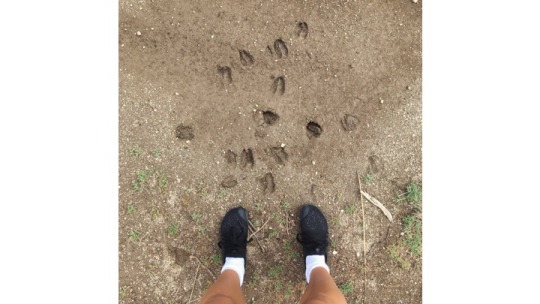
During that same visit, I came across a copy of the book Yaqui Deer Songs / Maso Bwikam: A Native American Poetry, edited by Larry Evers and Felipe S. Molina. Originally from the Río Yaqui, the indigenous Yaqui (or Yoeme) people now reside across the divided borderlands of Sonora, Mexico and Arizona, USA. I read that before setting out to hunt, their ancestors held a festive rite, enacting the wilderness world through a series of songs that address the deer, asking forgiveness for those animals that will die. Though hunting is rarely practised by present-day Yaqui, traces of the tradition remain extant in the Deer Dance, wherea single male dancer becomes the Maaso– the deer – and, wearing a stag headdress, he imitates the movements of a white-tailed deer.
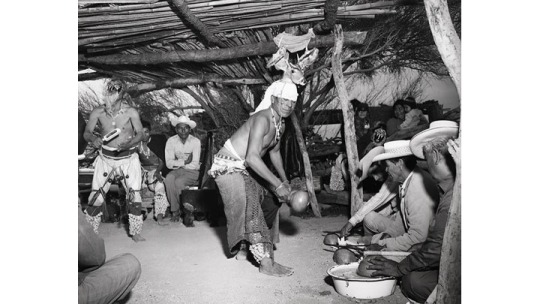
I was struck by the ways in which the photos of the costume bore a resemblance to some images I'd seen of the antlered headdresses found at Star Carr, a Mesolithic site in Yorkshire. Archaeologists have suggested that these red deer frontletswere worn in hunting rituals, allowing the wearer to harness antler effects, gaining access to the perspective of the 'animal-in-action'. Could this also be true for the Yaqui Deer Dance?
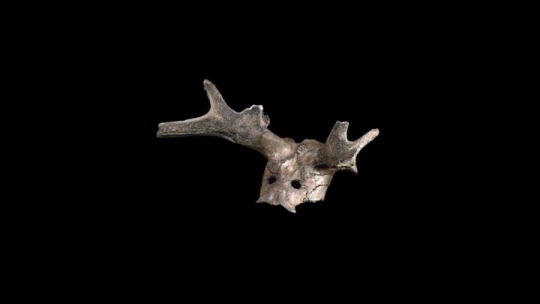
Pondering these connections, I recalled two dances I'd heard about in the British Isles – the Abbots Bromley Horn Dance of Staffordshire, believed to be a memory of a celebration of villagers’ hunting rights, featuringsix men bearing mounted antlers said to move like deer, and the Scottish Highland Fling, thought by some to have its origins in a warrior’s dance imitative of deer, with hands held aloft for antlers.
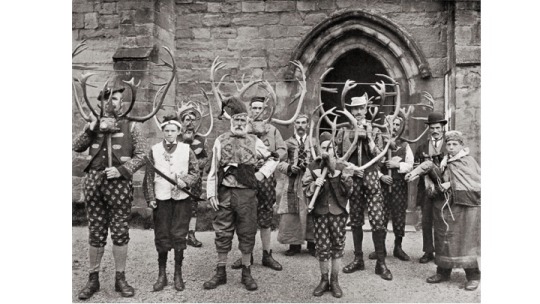
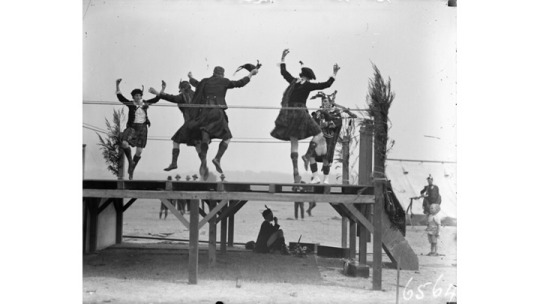
'Mimesis' – the imitation or emulation of the more-than-human-world – in traditional music and dance is something I've explored over the years, from Scottish Gaelic vocal imitations of birds, to the practice of embodying a river in South Indian Kutiyattam movement. I was keen to find out more and studythese three'deer dances' in tandem.What kind of deer effects are harnessed in these dances? Which deer behaviours are imitated and why? What do they reveal about our relationship with deer and ecology?
Over the next couple of years, I made numerous field trips to observe dances, interview practitioners, and learn steps directly from tradition bearers. Spending time observing deer, I consideredthe ways in which their behaviour is emulated in the dances and, learning about the ecologies of their habitats, I examined their relationship to hunting, stalking at Trees for Liferewilding estate in Dundreggan, and animal tracking in the Sonoran Desert. I was particularly interested in exploring the 'tacit' knowledge embodied in the dances. What could be discovered by 'learning' and 'doing' these dances, as opposed to just 'watching' them? What could be discovered in the body, through practices of stalking and tracking, instead of simply 'reading' about them?
Needwood Forest, Staffordshire...
I first went to see the Abbots Bromley Horn Dancein September 2017, and then again in 2018. This folk dance takes place once a year in the Abbots Bromley village, near to Bagot's Wood, an area of woodland just one and a half square miles, which is all that remains of the ancientNeedwood Forest. Like most forest in Britain, historically it was property of the Crown and, in this case, was once parcel of the Duchy of Lancaster.

Today the word 'forest' refers to an area of wooded land, but the medieval sense of the word referred to land set aside for royal hunting. The 'Royal Forest' included large areas of heath, grassland and wetland, essentially anywhere that supported deer and other game.Villages and towns that lay within it were subject to forest law, protecting the 'Beasts of the Chase' from being hunted by anyone except the king, safeguarding the habitat in which they lived. These 'beasts' were primarily deer, and included native red and roe deer, as well as non-native species such as fallow deer, introduced to England for the very purpose of hunting.
Every Royal Forest in England was overseen by a keeper who was appointed by the King, and whose position was often hereditary. Forest Law meant that it was illegal to hunt deer, chop down trees or underwood, unless permission had been given by the Crown. Penalties for offenses were severe, but by 1217, the death penalty for poaching had been abolished. This didn't stop some kings; during the reign of Henry VIII, a yeoman named Richard Horne was caught poaching deer in the woods and was hung for his crimes. His ghost, known as Herne the Hunteris said to haunt Windsor Forest, with antlers growing from his head and chains rattling behind him.
Within the structures of Forest Law, payment for access to certain rights became a useful source of income and local nobles could be granted a licence to hunt an agreed amount of game, giving forest inhabitants a variety of rights. As I mentioned, theAbbots Bromley Horn Danceis believed by some to be a memory of a medieval celebration of villagers’ hunting rights, possibly recalling the act of giving thanks to the local nobility for access to the Royal Forest. Others believe it was danced to ensure a successful hunt, or a good harvest. The forest itself was largely lost in the eighteenth-century due to deforestation. With all this in mind, I couldn't help but think that the Horn Dance was taking place in an imaginary landscape, in the ghost of a place that no longer exists.

The dance itself featuresten dancers: six deer-men carrying mounted antlers, a hobby horse, bow-man with his bow and arrow, Maid Marian (or man-woman) with their stick and ladle, and the fool with his pig's bladder. The antlers are mounted onto carved wooden deer heads at the end of sticks, reminiscent of a child's hobby horse toy. Surprisingly the antlers are not native; carbon dated to 1065, they came from reindeer, long extinct in Britain.
At eight in the morning, after collecting the horns from the church, the ritual begins. Moving in procession, the horn dancers exit the church yard and, on a street corner in the village, they perform a sequence of steps, circling and winding in time with the accompanying music performed on melodeon and triangle. Though stylized, particular movements are especially mimetic. Recalling the rutting behaviour of a number of species of deer, the dancers move together in a parallel walk, and then face one another, moving towards and away, passing through, as if clashing antlers during a fight. Followed by villagers and visitors alike, the horn dancers and their musicians proceed to beat the bounds of the village, walking over ten miles throughout the day, performing at each farm and pub. Taking a drink at every stop, as you might imagine, banter follows, with jokes erupting at every turn. The music is constant and consistent and, soon enough, I found myself humming along with the tunes. The sound of the triangle was particularly affecting, cutting through the cacophony of sound.

At Blithfield Hall, the tone changes considerably. The hall, a Grade 1 listed country house owned by the Baggots, has been in the family since the 14th century. The horn dancers perform on the lawn outside and when the music stops, they stand in line and wait. The Lord and Lady of the house then proceed to shake each dancer's hand, while the audience looks on from across the boundary wall. In a legacy of class inequalities, the memory of a celebration of hunting rights becomes particularly visible. Back in the village, the dancing finishes at about eight pm, when the horns are returned to the church, to be hung on display until the following year.
During the dance, I met Jack Brown, a tradition bearer and local historian, now in his nineties, who was dressed as a fool in yellow tails. He explained that he had "played all the adult parts" in the Abbots Bromley Horn Dance – deer, hobby horse, fool, man-woman and musician – and invited me to visit him at his home, a treasure trove of photos and objects, including props from the dance – a pig's bladder, triangle, bow and arrow, and stick and ladle. Jack shared with me his memories and knowledge of the dance's history and gifted me a pamphlet on his interpretation of it.
The horn dancers themselves are also very generous, opening up the floor – or ground – to participation, and over the two years I visited, I took part in a number of dances, giving me direct insight into the movements, shapes and step formations, as well as an embodied understanding of the sheer weight of the horns. Weighing between sixteen and twenty-five pounds, it is physically difficult to dance with these objects, to carry and move with them. Reindeer antlers are larger than red deer – our biggest native species – and if, as it has been suggested, they were imported from Scandinavia, perhaps we could say that the dancers of yesteryear were attracted to their size, in order to 'harness their effects'. What are these effects, I wondered? The size and weight of the antlers certainly enhances a performance of physical strength, perhaps showcasing 'heroic' abilities of endurance. During times when hunting was commonly practiced, these were presumably important attributes.
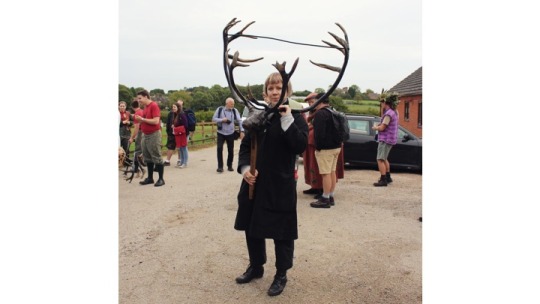
The props are most deer-like during the 'fighting sequence' when the antlers become like weapons between three pairs of rutting deer-men, albeit in an incredibly stylized rut. Some folklorists have posited that the Horn Dance was a fertility ritual; the antlers in this case would be symbolic of the male sex organ. Was this a mimetic display of the stag's bravado? Certainly, at some point, multiple powerful effects were being harnessed.
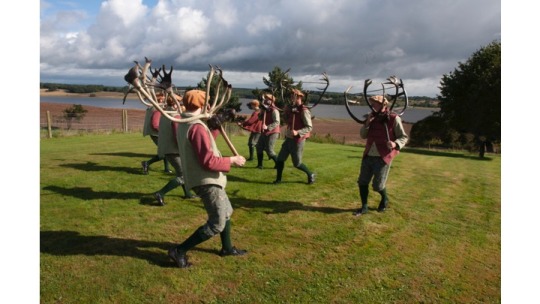
Back in the studio, I began to make sketches, tracking the shapes made on the ground by the dancers in a series of visual scores. Returning the following year, I showed my score sketches to Jack, and to Jim, a deer dancer whose family, the Fowells, have been performing the Horn Dance since 1914 after it passed to them from the Bentleys – interestingly, the Bentley family were historically the foresters of the local woodland. Checking the shapes and patterns on the page, Jack and Jim approved my visual notations, confirming their accuracy.
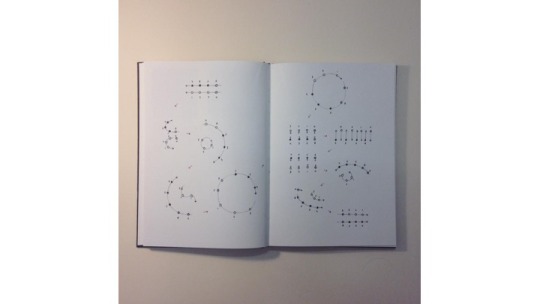
My notation process was also supported by a surprisingly fortunate booking! Reserving a room in a local B&B that looked down onto the area of the final dance, I was able to film it from above and compare the footage with my scores.
Caledonian Forest, Scotland...
The Caledonian Forest, characterised by Scots Pine trees, was once a huge forest stretching across Scotland. About 6,000 years ago, as the climate became wetter, some of the forest began to disappear, but the impact of human beings was even greater; trees were felled for ships, buildings, fuel, and to make way for agriculture. By the 1700s, the Caledonian Forest remained only in the most remote places and much of the wildlife that depended on this habitat was lost through hunting, or simply because there was not enough forest left. The last wolf is said to have been shot in Scotland in 1743, which meant that by this point, all of the predators had been wiped out. In fact, all of the largeanimals had gone, leaving only the red deer. Since then, this animal has come to symbolise the Highlands.
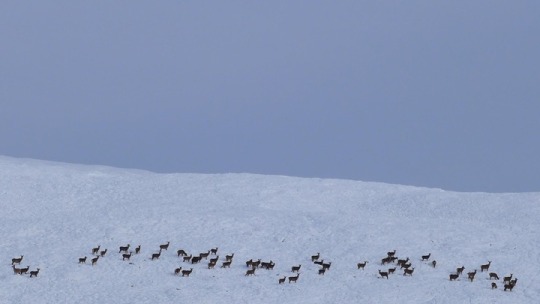
In the 19th century, as deer stalking became fashionable, large tracts of land were dedicated to deer, allowing their numbers to increase, and ‘deer forests’, which are essentially open hills managed for deer, doubled in size. Today, many Highland estates still maintain large deer populations for stalking purposes and the current number is estimated to be 350,000 individuals. Through their excessive numbers and overgrazing, deer are often seen as the problem that prevents the regeneration of the Caledonian Pinewood, however, the ecological imbalance between native forest cover, numbers of grazing deer and lack of natural predators has been caused by humans, not deer.
Trees for Life acquired their Dundreggan estate in 2008, and since then, they have been rewilding the land, planting new trees in places, such as higher mountainous areas where it is difficult for trees to establish on their own, and reducing grazing pressure to allow the forest to recover and regenerate, which, inevitably, involves the culling of deer. In 2017, I went to stay in Dundreggan, and went out stalking with Allan Common, the lead deer stalker on the estate. It was autumn, which in the red deer calendar, meant this was the time of the rut. Meanwhile in the stalking calendar, it was the time for hunting stags. I wasn't sure whether this seasonal stalking tradition was due to the fact that a rutting stag, full of high levels of testosterone, was less alert and easier to hunt, or whether it was because this hormone surge meant that the stag was now adorned with a large mane and antlers, and so more desirable as a trophy. Doug Gilbert, the operations manager at Trees for LifeDundreggan suggested that perhaps it was a mixture of the two – a legacy from the stalking craze.

Dressed in a ritual costume of wax jacket, gaiters and tweed deerstalker hat, at 7am I was met by Allan and two of his friends. Up on the hill, he instructed us to move as one body, then, as we got closer to the deer, he showed us how to lie on our bellies and remain hidden. At the edge of a ridge, we stopped to look down into a bowl-shaped area. The distant sound of roaring stags reverberated into the cold morning and, for a brief moment, through binoculars, I watched as two mature stags walked in parallel, checking each other out, before lowering their antlers, initiating contact. Throughout the morning, Allan, or one of his friends, would position a gun, then using its view finder, take a shot. Sometimes this awkward movement alerted the deer to our presence, so to counter this, Allan skilfully mimicked the bellow of the stag with his voice, to keep the stags interested. It worked! – at one point, a mature male drew very close, standing only a metre or so away. Concealed safely behind a boulder we listened to his spine-tingling roar. My heart beat fast.
While staying with Doug and his partner Joyce, a fundraiser at Trees for Life, I learned more about their work. In order to regenerate the Forest, as well as the practical task of planting trees, they explained that there needed to be a shift in values, from "seeing the land as a place for deer, to seeing the land as a place with deer in it". On the estate, it does feel as though this is happening. When I asked Allan what the biggest changes have been in his job as a stalker, he explained that it was his shift in perception; he used to think the deer were the most important thing, but now he values the land in itself, the ecology as a whole. He told me about an earlier job, working for a sporting agency, where people pay money to go shooting, but had realised some time ago, that he didn't like this 'trophy culture'. He preferred instead to have a relationship with the place, and recounted lying on his back, watching as a golden eagle flew over him, just metres above his body. His most treasured memories were not to do with stalking itself, but a connection with the more-than-human world.
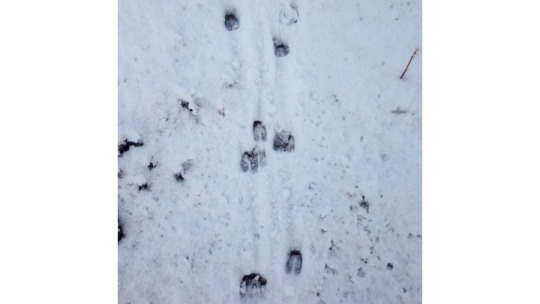
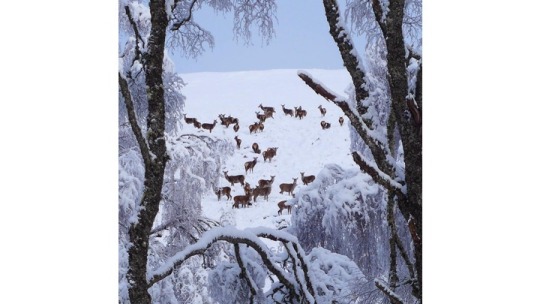
In February, when I returned to Dundreggan, there was heavy snow on the ground, and the deer tracks looked as though they had been debossed, not in earth but in thick white paper. It was the season for stalking red deer hinds, which, like the stags, were hunted in the morning. Night time was reserved for stalking the sika deer, an 'invasive' species from Japan. Being nocturnal, with a tendency to stay hidden under tree cover, they were difficult to spot. Allan used a combination of traditional tracking and an infrared thermal camera to find them. I began to reflect on the relationship of technology to the traditional costumes worn in the various dances, specifically in relation to the red deer frontlets found at Star Carr. Archaeologist Chantal Conneller has posited that these frontlets extended the body of the wearer, allowing them to "harness the animal in action", expanding their perception, essentially becoming-with-deer in order to hunt them. The user of the hunting rifle, with telescopic view finder and infrared thermal imaging also extends the body and perception, augmenting and expanding the senses, extending what is possible as a human being.
Allan may have used up to date technology, but he didn't appear to display any of the macho behaviours I had expected. His friends, however did, and on occasion, I felt uncomfortable. One ex-military friend, in particular, was keen to tell me all about his rifle throughout the stalks, even making me pose for the camera after a successful shoot. This macho sporting chat is not unusual in Scotland, in fact, it is part of mainstream stalking culture. After all, on most estates, the land is maintained as a 'wilderness' resource for deer, which supports an elite hunting economy for the privileged few – mainly rich cis white men on shooting holidays, collecting their trophies. This macho aspect of stalking is reflected in the language; the 'monarch', for example, is a term used to describe a mature stag with sixteen tine antlers, and thus the most prized trophy. Similarly, the language of animal behaviour studies is also gendered, and arguably problematic; the word 'harem', for example, is used to describe a group of female deer sharing a single mate.
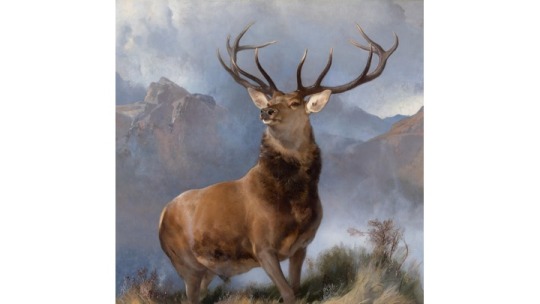
Deer stalking itself is steeped in myth and folklore. Geographer Hayden Lorimer writes: "The pursuit of deer, both as a pastime and as a livelihood, has a long history in the Scottish Highlands. Celebrations of these activities, preserved through several centuries in native Gaelic folklore, oral ballads and apocryphal yarns, were seized upon by the authors of stalking guidebooks, histories and personal reminiscences." Scottish 'deer' folklore was mined and appropriated by the cultural elite, giving deer stalking culture seeming authenticity.
The Highland Fling seems to be part of this process of appropriation. The story goes: Legend tells of a boy who encountered a stag; his father asked him to describe what he saw and, lacking adequate words, he danced the animal instead, his movements imitating capering, his hands held aloft for antlers. Becoming popular as an authentic dance of the highlands, it seems that deer mimesis gave the Fling credibility, but after some digging, I discovered that the story is more than likely a bit of 'fakelore' and probably invented by an eighteenth-century, Lowland dance teacher as a caricature of a 'wild' highland warrior who imitates deer. I couldn't help but think that this 'fakelore' shares striking parallels with the romanticisation of deerstalking, itself a mimetic performance of hunting traditions, reinterpreted and distorted into a form of macho display by landowning classes.

In Spring 2018, I began my studies in Highland Fling, taking lessons with dancer and teacher Sandra Robertson in Kinguisse. Sandra gave me a pair of leather ghillies – soft shoes traditionally worn in Highland Dance. Strangely, the word 'gillie' also means 'hunting guide' or 'male servant to a Highland chieftain'. The shoe's name is thought to be a type originally worn by Scottish hunting guides, who were servants to the lairds – there it was again: the working-class highlander at service to the landowning class and to the elite hunting economy.
I put the shoes on over my thick red socks and Sandra showed me some basic steps. Having done ballet up until the age of 19, I was accustomed to jumping, but the first thing to get used to was landing on the balls of my feet. This took some practice and on the evening after my first session, my shins were agony. Slowly, with time, I got used to it, and before long, I had learned six steps: shedding, rocking, toe and heel, backstep, crossoverand last shedding. It took me months of practice to get through the whole dance without stopping – it was exhausting! Anyone doing this dance regularly, had to be extremely fit.
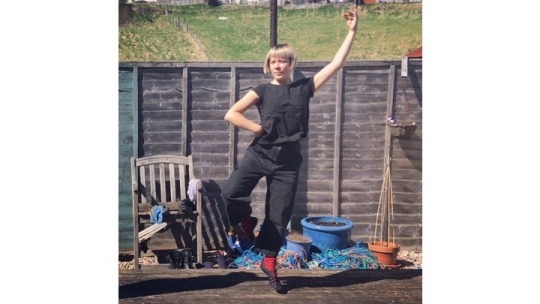
To help with my learning, I made visual scores of the dance, replacing arm positions with red deer antlers, and human foot fall with red deer tracks in a notation of the steps. I also began to experiment with blind debossing, inspired by seeing the tracks in the snow.

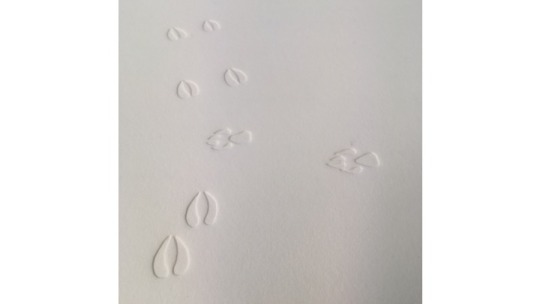
Romanticisation aside, learning the Highland Fling, I could understand why the story of deer imitation stuck. While dancing with deer in mind, the arms, when held high, felt like antlers. The steps, such as toe and heel, backstep and rocking were delicate and deer like, yet powerful and athletic. Two of the steps sheddingand last shedding seemed even to reference the stag's antler shedding, which happens once a year. I could imagine that if a dancer of the Fling performed well, it might make them feel powerful and elegant. I wondered how it might feel to perform this dance if I were a man?
Sonora Desert, Arizona and Mexico...
The indigenous Yaqui, or Yoeme tribe are originally from Sonora in northern Mexico. Seeking refuge from persecution by the Mexican Government in the 19th and early 20th centuries, some of this community were forced north of the border. Their descendants in the USA call themselves the Pascua Yaqui, and in 1978 they were finally recognised as an official tribe. Today, the Pascua Yaqui have eight communities in Southern Arizona.
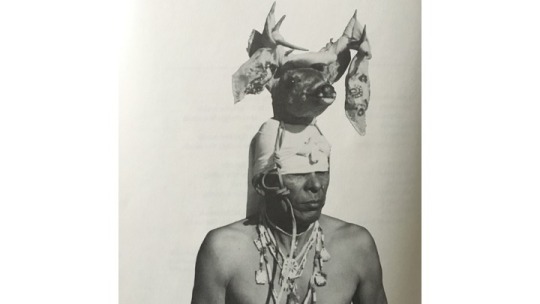
The Yaqui Deer Dance is a small but important element in the modern Yaqui ceremonial cycle, a ritual involving dance, music, pantomime, and poetry, in a complex blend of catholic and indigenous beliefs. Yaqui traditions speak of the Deer Danceonce being part of a rite performed before the hunting of the deer, but today that connection is only a memory.
Supported in part by the University of Arizona Poetry Centre, in March 2018, I went back to Arizona to begin to make connections with the Pascua Yaqui community. I met with Larry Evers, who co-authored the book on Yaqui Deer Songs mentioned earlier. He was about to retire from his role as a professor between the English and American Indian Studies departments at the University in Tucson, and when I visited, he was clearing out his office. Generously, he gifted me a pile of books and papers on Yaqui culture, as well as a set of DVDs with hours of footage of a Deer Dance ritual performed in Mexico in 1976. Of particular relevance to my research was an old type-writer written thesis, in which the writer Susan Burton explores the relationship of the Yaqui Deer Dancesteps to the movements of real deer and, using the 1976 film footage, notates the dance's vocabulary with labanotation.

Larry was excited by my research, though warned me that I would have many boundaries to cross. Firstly, my gender – the Yaqui Deer Danceis strictly a male domain – and secondly, my ethnicity as a white European. As with many First Nations people, the Yaqui tribe have been consistently ill-treated by various outsiders throughout history, from the invasion of the Spanish Jesuit missionaries and the Mexican Government's persecution of indigenous tribes, to the early American anthropologists misquoting traditions, and the US authorities' mistreatment of anyone who is not white. Understandably, the Deer Dance, and Yaqui culture more broadly, is rarely discussed outside the community.
I was readying Donna Haraway's book 'Staying with the Trouble' and the following passage resonated:
"Indigenous peoples around the earth have a particular angle on the discourses of coming extinctions and exterminations of the Anthropocene and Capitalocene. The idea that disaster will come is not new; disaster, indeed genocide and devastated home places, has already come, decades and centuries ago, and it has not stopped. The resurgence of peoples and of places is nurtured with ragged vitality in the teeth of such loss, mourning, memory, resilience, reinvention of what it means to be native, refusal to deny irreversible destruction, and refusal to disengage from living and dying well in presents and futures."
I wondered if it was possible to foster a meaningful dialogue and cultural exchange? To open up possibilities, Larry put me in touch with his long-term collaborator Felipe Molina, a Yaqui tradition bearer, teacher and translator, from Marana, Arizona. We exchanged emails and, though Felipe was interested in my research, he was too busy with his Easter commitments as a Deer Singer. We agreed to be in touch again later in the year.
During the Easter ceremonies, the Yaqui Deer Danceis held on two occasions, at the Pahko– an all-night Fiesta – and then again on Easter Saturday. Seeking permission to attend these, I contacted Daniel Vega from the Language and Culture Departmentof the Tribal Council at the Pascua Yaqui Reservation. At our meeting, I explained how I was exploring the imitation of deer across cultures in order to better understand their relationship to ecology and, sharing a little about my research so far, I was delighted when he showed a particular interest in hearing about the Abbots Bromley Horn Dance. He explained that the Yaqui tribe perform their various ceremonies as healing rituals, not just for the Yaqui, but for everyone around the world, so, if I went with respect, I was welcome to attend the Easter ceremonies at Old Pascua– the old village in South Tucson. He warned me not to take photos, make sketches or any recordings – this was strictly forbidden – and that I had to keep my cell phone out of sight.
Not quite knowing what to expect, on Friday evenings I began to attend the Lenten ceremonies, participating in the processions of the fourteen Stations of the Cross, following the various church groups who sang and prayed at each of the crosses positioned around the Old Pascua village. Also partaking in the processions was a ceremonial group called the Fariseos, who are said to represent those who persecuted Jesus. Within this group were the Chapayekas– masked figures who symbolise evil. One of the Chapayekas'ritual functions is to deride the procession and distract the church groups by silently mocking them, beating time with swords and daggers, and shaking the deer hoof rattles around their waists and moth cocoon rattles on their ankles. My initial reaction was to laugh at their pantomime-esque performance, but as the sun went down and the procession continued in darkness, they really felt quite sinister. I soon discovered that it is taboo to stare too closely at a Chapayeka.
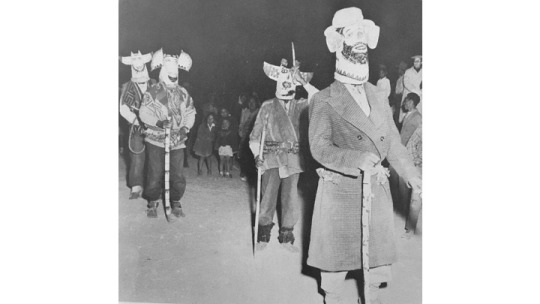
On Palm Saturday, I attended the Yaqui Pahko. Though I'd read so much about it, nothing could quite prepare me for the experience of this multifaceted, powerful night-time ritual. Approximately two hundred performer-participants, divided into about twelve groups, each with a distinct role and music, carried out ritual processes and costumed dances representing the various overlapping forces of good and evil. There was only one Deer Dancer though; at the Ramada, a structure symbolising Huya Ania (the wilderness world), the Maaso(the deer dancer) emerged as a timid fawn and, dancing alongside the Pahkola(a group of clown-like animal-esque figures), he slowly grew into a virile adult male through the night, before predicting his own death and concluding his dance as an animal spirit.

During a break in the ceremonies, I chatted with someone I'd met in the 'audience' who made a striking observation about how the Maasoalways has his torso tilted forwards, like the enigmatic Palaeolithic ‘sorcerer’ cave painting of the Trois-Frères caves in Southwestern France. I hadn’t made the connection before, though I had stuck an image of the ‘sorcerer’ in my sketchbook. The visual similarity is uncanny – was this how humans become-with-deer?
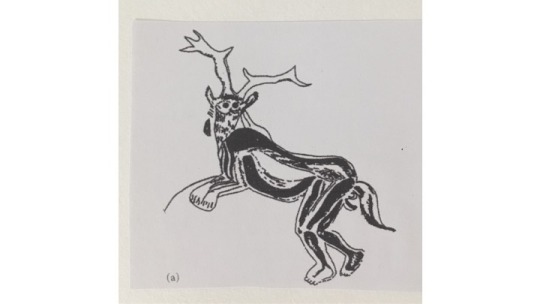
A similar sequence of Deer Dances took place on Easter Saturday, another complex, multi-layered ceremony, where, in a battle against evil, the powers of the more-than-human world were harnessed. Dancing Matachiniswore flower streamers in their hats, processing Angels waved branch-switches in the air, trickster Pahkolas wore animalesque masks, and, the Maaso (Deer Dancer), in his final dance, charged at the Fariseos, threatening with his antlers. Finally, when evil was defeated, the Fariseoswere ritually ‘killed’ by 'flowers', symbolised by paper confettithrown at them, and a straw ‘Judas’ was burned in a fire, along with all the Chapayekamasks and swords. Bells rang out from the church and celebratory music was played. With so much colour and joy, I felt like I never wanted to brush the confetti out of my hair!
In a closer examination of the Deer Dance itself, the combination of the dancer's movements and costume seems to span a spectrum of mimesis, from iconic deer imitation to something more stylised. The deer's headdress enhanced the sudden sharp-to-still deer-like movements of the head; soon enough, I found myself watching not the dancer's eyes, but the deer's eyes, partially hidden beneath the cloth. The long line and tension of the tilted torso suggested a deer's back, and the white cloth joining the dancer's head and deer head gave the impression of a deer's neck and shoulders. The flexed feet were reminiscent of the animal's hind legs, while the gourd rattles suggested the front legs, the movements of which gave the impression of a deer's speed and agility. The footwork itself – the choreographed steps – seemed less iconic and more stylized. I wondered if I would be able to meet and learn from a dancer some time...
The dance is traditionally accompanied by three musicians who sing and play instruments: the hirukiam,notched rasping sticks resting on half-gourd resonators said to represent the deer’s breath or the scraping of the antlers against the brush, and the ba’ abweha’i, a water drum made from a half gourd floating in a bowl of water, representing the heart-beat of the deer. Sitting on the floor during the dance,I could feel the vibrations of the water drum in my chest, and I imagined that the dancer might be tuning his heart into a deer's heart beating.
The songs accompanying the dance, are sung in Yoem noki(the Yaqui language) and describe the Maaso(the deer) and his encounters with other animals, birds, insects and plants, especially flowers, which hold a spiritual significance. The Yaqui believe that there is a close communication between all the inhabitants of the Sonoran Desert, which they call Huya Ania. This could be translated as 'wilderness world', but it is worth pointing out that the word 'wilderness' here, does not mean a "neglected, uninhabited, or inhospitable region" like it does in the Oxford Dictionary, but a living, connected community. This ecology of the Sonoran Desert appears in the traditional songs, which become like scores, or a script to the dancer who, as the deer, also becomes, for a moment, the badger that is being described, or the hummingbird, or the mountain lion.
Later that Summer, I returned to meet with Felipe and, over a number of meetings, learned more about the dance. We shared our perspectives and he generously answered my sprawling questions, teaching me about aspects of Yaqui culture, including some Yoem nokiwords. Felipe explained how the Deer Dance was a way for people living in the city to connect with Huya Ania (the wilderness world) and Sea Ania (the flower world), and as he described how the songs are lessons for listeners to learn about ecology and Yoeme ancestors, I began to think of the Yaqui Deer Dance as a form of activism.
I was honoured when Felipe invited me to give a talk to his students, a class of young Yoeme adults, who were learning about their culture at the Yaqui tribal chambers on the reservation. I shared a little about my work with vernacular traditions, specifically Scottish Highland culture and language, and about the history of the repression of Scottish Gaelic and the current resurgence of the language. It was good to hear Yoeme perspectives. Though the Yoem Noki language is under threat of dying out, people like Felipe are out there doing the work of preserving and passing on knowledge.
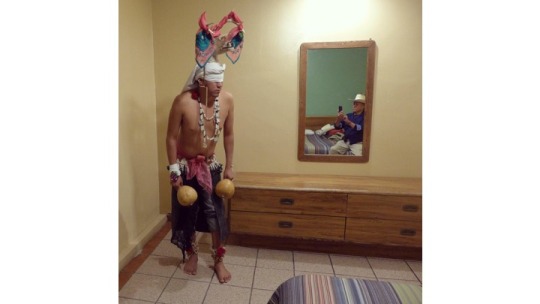
Felipe and I began to make plans to visit a Deer Dancer in Mexico later in the year and, in November, over a number of days, we went back and forth by foot across the Mexico-USA border, to work with Indalecio ‘Carlos’ Moreno Matuz, a young Yaqui Deer Dancerfrom Vicam, Sonora, in the Yoeme homeland. We worked in Carlos’ hotel room, where I interviewed him and learned about the physical and symbolic aspects of the dance through demonstrations and diagrammatic drawings, while Felipe translated from English to Yoem Noki and back again.

Felipe and Carlos explained that the dance had only ever been performed by men because they were the ones who traditionally went hunting. Interestingly,the deer behaviours imitated were less about the bravado and display associated with the rut, and more about alertness and agility as a form of defence. This corresponds with the fact that in Yoem Noki, there is no word for 'buck' or 'stag'; Maasosimply means 'adult male deer', though his other song names are displayed here. The only time the Maasodisplays aggressive behaviours, such as charging or threatening with lowered antlers, is when he is being attacked or provoked by other figures in the ceremonies.
The white-tailed deer – and coues-white-tailed deer – live in areas of the Sonoran Desert – a land that rambles over 320,000 km, across two countries. It is home to about 130 species of mammals, more than 500 kinds of birds, 20 amphibians, 100 or so reptiles, 30 native freshwater fish. There are perhaps as many as 2500 native species of plants and 4000 in total. It is also home to at least 17 Indigenous cultures as well as many others who have adopted it.
The tribal lands of the Yaqui have been irreversibly damaged, initially due to the European invasion and colonisation, and latterly by the rapid growth of capitalism and climate change degrading the ecology. Along the Yaqui River in Mexico, eight tribal villages have no water due to drought and the actions of agricultural corporations and, every year, people battle with wild fires caused by rising heat levels and invasive grasses spread by cattle. Although the culture of the Yaqui Deer Danceis being preserved, the ecology of the wilderness world is seriously under threat.
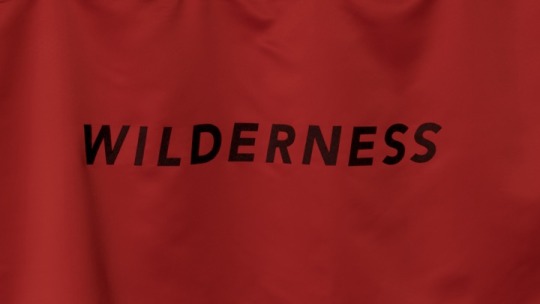
Wild-deer-ness
Throughout the process of exploring these dances, I considered how a body of work might emerge from my research. By conjuring the antlered male deer, the dances evoke images of wild nature, but I realised there is a disconnect between what is encoded in their movements and the reality of local ecology. I was also acutely aware of the striking relationship between our cultural perceptions of 'wilderness' and ideas of 'masculinity'.
How could I honour these folk traditions and histories, yet simultaneously critique and de-stabilise constructed problematic narratives? How could I address contemporary intersections of ecology, gender and class? How could I touch on the complex relationship between indigenous cultural knowledge and the appropriation of vernacular culture? What did I want to explore and communicate?
I spent time writing, thinking, dreaming and in my note books began to distil my research into words:
From Palaeolithic cave paintings, to Landseer’s Monarch of the Glen, throughout time, artists have made representations of deer. Whether as staples to hunter-gatherers, icons of power and empire, or the focus of sport, deer have long been central to human cultures.
In popular imagination, deer remain etched into people’s consciousness as emblems of the 'wild' – the word wildernessitself, derives from the Old English wilde, wild, and doer, deer – and our relationship to the idea of wild-deer-nesshas shaped the landscape. Transported across continents, some species, such as fallow and sika deer, transformed ecologies with the establishment of royal deer forests and parks – hunting grounds belonging to the Crown. Other species, such as the reindeer of the arctic tundra and white-tailed deerof the Sonora desert, face threats of habitat loss caused by climate breakdown. In Scotland, the overpopulation of red deer due to human made environmental change impacted greatly on the degradation of Caledonian pinewood ecology.
And so, it follows, although they are perceived as powerful, deer also embody vulnerability. Constantly alert to the threat of a hunter or predator – or the ‘ghost’ of an extinct predator – they inhabit vulnerable places. It could be said that deer do not live in wilderness, but in ghosts of places that no longer exist.
Across timescales and cultures, our relationship with deer as a totemic and ideologically powerfulanimal has contributed to a construction of wilderness as an imaginary landscape, setting 'nature' apart from 'culture'. Is it possible to shift our relationship to the world and renegotiate these dichotomies?
The dancers at Star Carr, the Abbots Bromley Horn Dance, the Yaqui Deer Dance and the Highland Fling are separated by geography and time, yet there is a commonality in these seemingly disparate cultures, which find echoes throughout history, fromthe ritualised carrying of stag heads condemned by medieval European church leaders, and Herne the Hunter, the antlered ghost of a royal gamekeeper in English folklore, to the Tibetan stag-headed Chamdance and Shishi-Odorideer dance of Northeast Japan.
Evolving over generations, each dance is mimetic in some way, with movements that imitate male deer behaviour and gesture, from the frolicking of the fawn and the alertness of the adult male, to the bravado, display and aggression of the rutting stag.Costumes also play a significant role, and often, but not always, feature elements of attire made from animal parts. Another common feature is that they are (or were) traditionally performed by men and, with their displays of muscular strength and athletic endurance, they are all thought to have their origins in (or associations with) hunting ritual practices.
As traces of hunting rites, how are these dances to be understood within a contemporarycontext?
How does the mimesis of male deer behaviours inform a 'performance' of masculinity by male dancers? What are the implications of these gendered performances in society today?
Returningto the animal tracks that obsessed me, back in the studio, I finished scoring the three deer dances I had studied, tracking the steps of the dancers, replacing human foot-prints with deer hoof-prints: red deer for the Highland Fling steps, white-tailed deer for the Yaqui Deer Dance steps, and reindeer for the Abbots Bromley Horn Dance steps. Working with Edinburgh Printmakers, I developed these into a series of blind debossed prints.
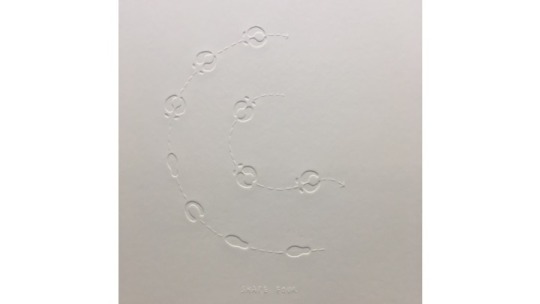
Becoming-with-deer
Considering different approaches to choreograph from the scores, I decided to draw upon the most mimetic aspects of what I had learnt and adopt fragments of steps to make something entirely new. But who would perform this? Drawing on multiple layers of my research, I began to conceive of a series of characters, each one a constructed assemblage of aspects drawn from a male-deer/male-human spectrum, playfully dissolving human:animal binaries. Making sketches of these figures, I gave each of them names borrowed from archetypal male characters found within traditional theatre, as well as deer and deer stalking terminology: monarch, warrior, young buck, fool and old sage.
To get to know them with my body, I decided to attempt to become each deer-man myself. By queering these figures, I hoped to challenge our constructed ideals of masculinity and question the mythologies that give authenticity to gendered behaviour. Having experienced some of the more negative and toxic behaviours of the heroic-hetero-male in my day to day life – let's call this thecrisis of masculinity– I also wondered if, by becoming these characters, I could release myself from their impact on me as a queer woman, and simultaneously bring to the foreground the impact of these behaviours – the crisis of ecology– on vulnerable and damaged habitats.
My plan became to create a moving image and sound work, performing each character in a choreography-to-camera. I began to collaborate with two performance artists: Peter McMaster and Will Dickie, who both practice at the intersection of live art and dance, and whose past work had, in various ways, explored tropes of masculinity, ritual and ecology. Peter collaborated with me on the film's dramturgy and Will became the movement director, helping to devise the choreography. Together, we discovered and developed the characters.
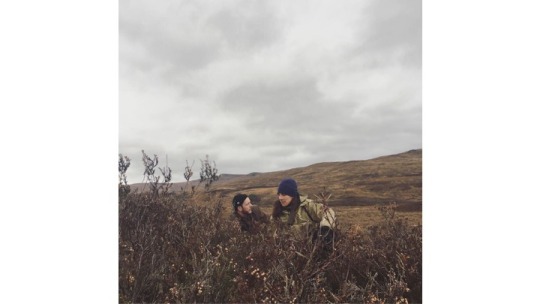
To begin our process, in October 2018, we spent a few days at Trees for Life, workshopping ideas and watching deer. We also went out deer stalking with Allan. This time I was very sensitive to his movements, almost reading him as a dancer, and was struck by the ways in whichhe took on qualities of the animal of the hunt, harnessing deer-perspective.Like the deer, he was quick to register distant movements and sounds and, on getting close to the animal, to remain hidden, he tilted his torso with bended knees, a pose strikingly similar to the Yaqui Deer Dancer's basic posture and cave painting of Trois-Frères.Will made an interesting observation about how the deer stalk appeared to be carried out in clearly defined ritualised stages. Beginning casually, walking upright and chatting, we slowly grew tighter as a pack, becoming quieter and more focused, tuning in to our surroundings and, as we drew near to the deer, we got close to the ground, not moving or making a sound, our bellies up against the heather. Before taking a shot, Allan spoke about a moment of stillness – a stillness of breath and of thought.
In a similar way, each dance that I had been studying, sat at a different stage in the ritualised drama of the hunt: the Yaqui Deer Dancetraditionally took place before hunting, allowing the hunter to access the perspective of the deer; the Highland Flingwas a dance of triumph, a dance to feel powerful and in control; and the Abbots Bromley Horn Dancewas a celebration after the hunt, to give thanks. With gestures that ranged from iconic imitation to stylized metaphor, these rituals of the hunt were clearly mimetic of the rituals of the deer rut. But how could the dramaturgy of my film address what felt urgent to me: the interconnections between the crisis of masculinity and the crisis of ecology? We slowly began to realise that if Deer Dancer was to function as a ritual space, perhaps the characters would have to stalk each other to the death...

Early the following year, Will, Pete and I worked together to discover the five characters from the inside, developing their movement vocabulary and training exercises and, as we explored the relationship between them, a story emerged. I began to conceive of a two-channel film and sound work that would play with, and attempt to destabilise narratives found both the within anthropology documentary and wildlife/nature documentary. To prepare for the filming process, I created a story board for the two screens, and composed and recorded a multi-layered vocal composition to perform to.
Utilised technology to 'extend my body' and expand my vocal range into 'male' and 'stag' pitches, I worked with my voice to imitate drum sounds. Recalling my experience of the Yaqui water drum, and the Abbots Bromley Horn Dancetriangle, my intention for the sound was to affect the viewer-listener on a body level, sometimes in a way that is unsettling, at other times like a heart-beat of low vibrations in the chest or belly. Alongside the process of developing the characters physicality, and the vocal score, I began to design and make the costumes and props, with invaluable assistance from my partner Lydia Honeybone, using an assemblage of materials, from ribbons and sequins, to bullets and hunting horn. I also worked with naturally cured deer hide, hooves, antler and skull, specifically for the cod pieces, and the weapons, hinting at the relationship between the posturing of male sexual bravado and violence.
We filmed over three days in Glasgow University's theatre against a black curtain. My director of photography Andrew Begg lit the space, and followed the story board shot by shot, filming each character one by one, then, in post-production, with editor Laura Carreira, I then pieced together the jigsaw puzzle.

Introducing the characters...
The Monarch is a mature, dominant male, who holds his head high, displaying his sixteen-tine crown and enlarged neck. Over his hide, he wears gold. His stance is wide and a bulbous codpiece with tassels enhances his majesty. Belling loudly, he asserts his authority, warning off rivals to his harem of hinds. But he's growing old and his limbs are becoming stiff. Soon he'll be past his prime.

The Warrior is highly alert, his senses tuned into his surroundings. He tracks and hunts, defending himself on attack with antlered spears that extend from his shoulders. He's in his physical prime; his chest is hard and strong and over his tartan loins, he wears a sporran and bullet belt. When he hears his rival, he sounds his horn, displaying his power.
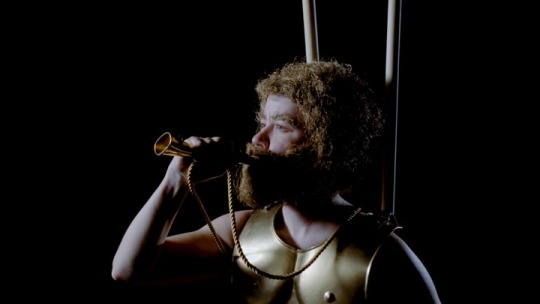
Though the Young Buck has reached sexual maturity, he's still a spiker, yet to win his own harem. But he's looking. Dressed in tweed trews and protruding codpiece, he taps the ground, addressing potential rivals. He is lustful, cocksure and trigger-happy, challenging anyone in his close proximity. Breathing heavily, he's on the hunt for a hind, on the hunt for a fight.

The Fool, small in stature, avoids the dominant males as they proclaim their authority during the rut, bawling and displaying his white behind in fear. Wearing ribbons, bells and a modest codpiece, he carries a broom with antlers, a hobby stag that appears to push and pull him into combat. Haunted by ghosts, this skittish staggard is bewildered by his own inner conflict.
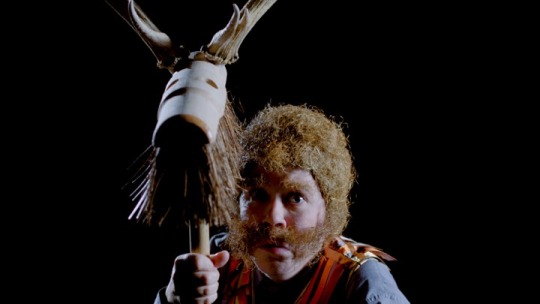
The Old Sage is a spirit of the wild hart and ghost of a man. Haunting the wilderness with skull and ragged horns, he relives his life tending the land with hooves and hands. He also relives his death. Only perceived by a few, he sees all.
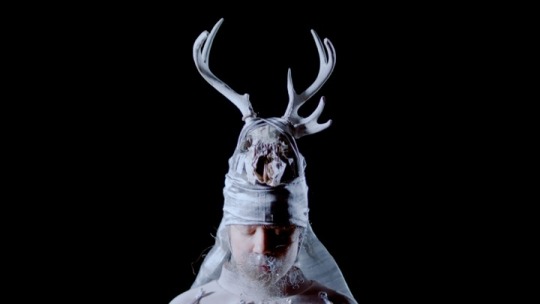
Deer Dancer
In the resulting work, the costumes, movements and music work together to tell a story, with the visual scores acting as hidden keys to the work. In the 'pop up theatre space' of the gallery, we meet the five characters in an imaginary wilderness world. This wilderness world is not rooted in a particular ecology, but is place-less, black and empty, allowing the viewer-listener to construct and project their own wilderness into the space.
A dynamic emerges between these deer men, and slowly they begin to stalk one another.Then, in a face-off, they lock eyes, take a bow and the deer dancecommences. With movements that signify both the deer rut and a pre-hunt ritual, the characters face one another, performing their ritual dance, with fragments of steps from the three dances. In the visual scores, these steps are delinieated in gold foil on the debossed tracks – interestingly, the word 'foil' also means 'animal track'.

Then, coming to a stop, one by one, the deer-men draw their weapons, and we see each one lying in their death pose, with blood flowing from their body, signified by slow moving red ribbons. As bodies disappear (or decompose), the costumes remain as relics of culture to be performed again. Bit by bit, they too disappear, until then reappear on my body, piece by piece, reconstructing each character in a queer assemblage. And then it begins again...
Stuck in a perpetual loop of learned behaviour and appropriation, these stag-men are ultimately condemned to self-destruct. Humankind has left a footprint so deep that we are only now beginning to grasp the immensity of the calamity. In a small way, I've come to think of Deer Dancer as a contemporary life-crisis ritual for a damaged planet. But when the balance has been set right in ritual, the question becomes how do we really address the damage?
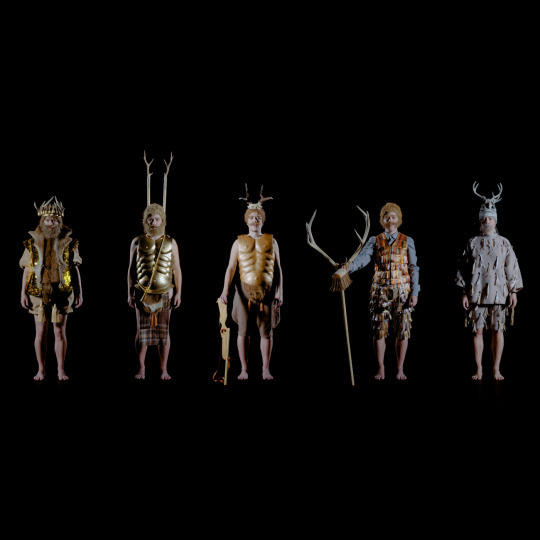
This text was originally written and presented as a talk at Edinburgh Printmakers in September 2019, to accompany Tuulikki’s Deer Dancer exhibition.
Deer Dancer credits: Performed & directed by Hanna Tuulikki; Character development and choreography by Will Dickie, Peter McMaster and Hanna Tuulikki; Dramaturgy by Peter McMaster; Movement direction by Will Dickie; Sound composed and recorded by Hanna Tuulikki; Sound mixed with Pete Smith; Director of photography by Andrew Begg; Edited by Laura Carreira; Costume fabrication assistance and wardrobe management by Lydia Honeybone; Production management by Amy Porteous; Costumes and print works by Hanna Tuulikki
Developed through conversations and interviews with tradition bearers and academics, Felipe Molina (Yaqui tradition bearer/ translator), Larry Evers (American Indian Studies, The University of Arizona), Jack Brown (Abbots Bromley Horn Dance tradition bearer/ historian), Doug and Joyce Gilbert (Trees for Life); by observing a number of dances and participating in rituals, including the Yaqui Deer Dance (Pascua Yaqui Easter ceremonies, Old Pascua, Tucson, Arizona, March 2018), Abbots Bromley Horn Dance (Abbots Bromley, September 2017/2018); and direct learning with Sandra Robertson (Highland Fling), Indalecio 'Carlos' Moreno Matuz (Yaqui Deer Dance), Gary Faulkenberry (animal tracking, March, July 2018), Allan Common (deer stalking at Trees for Life, Dundreggan, autumn 2017/2018).
Commissioned by Edinburgh Printmakers, funded by Creative Scotland. Research and development supported by Magnetic North's Artist Attachment, funded by Jerwood Foundation and Creative Scotland. Additional support from Hope Scott Trust, The Work Room, University of Arizona Poetry Center, Trees for Life, University of Glasgow, Glasgow School of Art, and CCA: Centre for Contemporary Arts, Glasgow.
16 notes
·
View notes
Text
1828 Apr., Thurs. 10
7 1/2
11 1/2
From 9 to 10 1/4 at my England cashbook – Breakfast at 10 1/4 at 10 55/60. Set off to walk to H–x [Halifax] with my father – Put into the post my letter to I[sabella] N[orcliffe] – Written yesterday evening – Then went to Mr. Parkers office to speak about Northgate house being let to Mr. Scatcherd – Mr. S– [Scatcherd] to come tomorrow at Shibden tomorrow between 11 and 12 –
There seems to be little doubt of my selling ground for the new church – Mr. Pollard was 1st applied to – He asked 10/6 per yard – But when he found this would not do, said he would take whatever price I agreed to take – However Mr. Musgrave said, it was then too late, as he was in treaty with me –
Mr. Parker begged me not to cut down the trees on the ground – Said I was just going to order William Keighley to mark and value take them down but that I would now let them stand, and we would have no difficulty on this subject – Mr. P– [Parker] thought my aunt would have to sign the deeds and he must take them over to her to Paris –
We then went to look at the new canal, and thence to Mrs. Rawson Stony Royde, and sat with her 40 minutes – She seemed delighted to find me not at all changed, very interested and glad to see me – Said I had done her good – Her son Jeremiah’s family in distress – Had just lost a daughter in her 10th year, and another child or 2 ill –
Then went to Throp’s – Could have hollies at 6 /. [shillings] a hundred – Then went to William Keighley’s to tell young William to come tomorrow afternoon – Ordered shoes at Booth’s in the new bank, and got home at 2 10./60
At 2 1/2 set off to Lightcliffe – Went along the walk – Completely grown up – At the bottom of the dolt not distinguishable – A little care might have prevented all this – Found Mrs. W[illiam] P[riestley] at home – Sat with her 1 35/60 hour, and got home about 5 – Did not see Mr. W[illiam] P[riestley]. We talked about the tithes – Mr. W[illiam] P[riestley] quite sure the vicar will get them – Mr. Oastler proud of having my father for his main support in the opposition –
Mrs. W[illiam] P[riestley] likes Marian, thinks she has plenty to say – Much more in her than she thought – Has decided opinions, tho’ Mrs. P– [Priestley] and she generally differ – She (Marian) is very warm – the P– [Priestley]s going to move to near Lancaster to induct Mr. Hudson into his new living of £700 a year –
Mrs. P– [Priestley] very glad to see me – Asked if I meant to call at the vicarage – No! – Only came for a short time – Was not necessary, and in the present state of things might be better let alone – But did not mean to identify myself with my father. My walk all gone to ruin. Annoyed about it for the moment, but should say nothing. Should not be here longer than I could help. She asked if I should ever live [here] saying she always said yes. I merely told her she said right asked if she had heard of my . . . . . She replied, ‘marriage with a french count marquis’? Said I, ‘you must say’ –
Got home about 5 – Walked about with my father below the house to the fishpond – My father shewed me a tree he must cut down – I said ‘No! No! By no means’ – ‘Yes!’ said he – ‘No! I am positive about that’ – ‘Why it was in the way of the road (to the fishpond) – ‘Road’ said I – ‘They can make room enough – The road is temporary – The tree I wish to stand’ – ‘What will you have no road?’ ‘No!’ said I. ‘Not here – I shall change all this’ –
Dinner at 6 10/60 – Afterwards naming Watson’s [mistress?] H–x [Halifax], the endowment of the vicar etc. Talking to Marian of the tithes, etc. Told her Mrs. P– [Priestley] had said she was sorry to hear, to say speaking of visiting at the vicarage “all that was over now” – Lamented that Marian should seem to be the 1st to turn her back on the vicar because he claimed what, if his right, he ought to have –
Then wrote the above of today – Rainy morning till 10 – A little rain after dinner – Note this evening from Mr. Parker to say Mr. Scatcherd could not come at 11 or 12 tomorrow but would come on Saturday unless I could be in H–x [Halifax] before 10 tomorrow morning or after 5 p.m. – Came to my room at 10 1/4 – Cut my toe nails
4 notes
·
View notes
Text
Monday, 16 April 1827
6 1/4
2 10/60
my bowels tolerably well – sat half asleep near half an hour on the pot – the washer woman came at 8 1/2 – settled with her in 5 minutes –
at my desk at 8 35/60 – wrote the 2 last lines – read over Marian’s letter – from 7 55/60 to 10, wrote 2 pages and the ends, and under the seal to Marian – glad of the good account of themselves – so will not dwell upon the disagreeable intelligence of Northgate not being likely to let – trust Marian speaks generally, and has no reason to apply particularly to me what she observed about its being ‘very necessary if not absolutely necessary for a person of moderate fortune to live not very distant from their inheritance’ – If she or my father thought my presence necessary of course they would tell me so –
‘we are now so comfortably settled, that I should have no difficulty in leaving my aunt for any length of time, that could be necessary – In fact, from harass, or anxiety, or 1 thing or other, I have been a little out of sorts lately, and mean to change the air a little by and by – what we shall do next year, it is as yet quite impossible to say – my aunt’s general health is certainly better here, than it was, or than those, who ought to know best, thought it would be, in England: – but I do not mean to say, that the complaint is, or is likely to be, driven away from her limbs – However by next spring, she will be better able to judge for herself – to me, so long as we are sufficiently within reach of our affairs, it is matter of indifference where we live – It is possible to be happy anywhere, if the mind be right – the loss of those whom we have all our lives been accustomed to see, is a greater loss than we may have imagined till it has been been tried; but even this may be got over, if there be adequate reason for it – I suspect that, as you grow older, you will let slip many of your own schemes of going here and there – Perhaps you have already 1/2 forgotten many of your dreams about St. Petersbourgh etc – ‘a rolling stone gathers no moss’ – If moss stands for money, nothing can be more true – we do pay dear for most things; and there are many things cheaper in England than here: – but we have no doctors’ bills to pay as yet; and perhaps we should not have saved much at the year’s end by going to any place in England, which has yet occurred to us – But saving is not the question – I am only anxious to do what is best for my aunt; and whatever she even fancies, be it what it may, we shall try – send our remembrances particularly to Mrs V– (Veitch) with a kind message from my aunt, and remembrances to all the principal of our connaissances – make what use you like of my remembrances at Market W– (Weighton); but do not forget Mrs Skelding – I conclude Mrs I– (Inman) is still at Lancaster – if they go to Hull to give my thanks etc to Mrs Knight for the Euripides Medea by Parson given me in remembrance of Mr K– (Knight)
mention the reports in the French papers of yesterday (Journal des Debats) of Mr Canning’s being prime minister and to make his own cabinet – and how all the liberal French are delighted – read over my letter wrote the above (except the 1st 1 1/2 lines) folded and directed my letter to ‘Miss Marian Lister Shibden hall, H–x (Halifax), Yorkshire Angleterre, post payé’ and sent it in to my aunt to read all which took me till 10 40/60 –
from then to 11 10/60 at breakfast – then sent back volume 10 Anquetils précis de l’histoire universelle ‘à Madame Madame Sené avec les compliments and les remerciennes de Mademoiselle Lister’ written on the paper in which the back was folded – then sent off my letter to Marian (vide 4th line above) at 11 20/60 – then finish dressing –
Talking to my aunt – considering what things should be got, etc etc went out at 1 – Took George with me – bought several things at Bertrand’s – Sardines à l’huile not in season – for they should be fresh to be put in oil (and Bertrand had not any), and would not come in of 3 months – En passant chez Lesueur (rue des Petit Champs No. Number 31.) saw some nice looking beef (ribs) asked the price 10 sols a lb. (pound) – bought 6 1/2 lbs. (pounds) they were giving me a lb. (pound) of rejouissance at 9 sols – would not have – then must pay 1 sol a lb. (pound) more for the beef – did so – asked the price of mutton – 14 sols a lb. (pound) – nice but not so small as Mignand’s –
just before entering the place des Victoires turned to the right down to the passage Verododat – thro’ it, and came out into the rue St. Honoré opposite the oration – En passant went into No. 82 rue St. Denis près celle des Lombards – large wholesale confections shop – only asked me 3/50 a lb. (pound) for fine chinois, the same for apricots – the latter not yet egouttés – bought a lb. (pound) of the former determining to make this my shop – for marmalade d’abricots and all such things 2/. a lb. (pound) – the little pots I buy said to contain 3 oz. (ounces) less than a lb. (pound) – 2 francs a lb. (pound) = 2 1/2 sols an oz (ounce) – at this rate I am right to buy of Bertrand’s – I only give 32 sols. for 13 oz. (ounces) and have the pot – from the confection’s (B. Perrot Pezé), to No. 1. rue des Lombards – bought 3 lbs. (pounds) tea, and sent home George –
sauntered down the rue d’Arcis, and to the Marché au Gibier – a woman asked me 18 sols for fineish skewered pigeons (Bertrand said I ought to have very good at 1/. but there from 14 sols to 30 sols!), I could have got them easily for 15 sols, but only offered 12 sols – then strolled along the Quais looking at prints and maps as I passed – the troops reviewed by the king today in the Champ de Mars – a crowd about the port royal (de Louis 16) etc – thro‘ the gardens – just got under the arcade in time (at 4) to Escape a shower – detained there perhaps 20 minutes – the channels in the streets full of water – obliged to cross (from the rue neuve de Luxembourg) over the little communion show in the rue Richepanse – beginning to rain again just before I got home –
came in at 4 1/2 – Monsieur and Madame Sené with my aunt in her bedroom about her bed on account of bugs – they must come from MacDonald’s bed – Madame S– (Sené) now recollects the nurse had this bed once (last year) in a 4rième when they were from home, and she complained much of bugs – the bois de lit is to be taken away and MacDonald to have another – all very civil – talked a while to my aunt –
came to my room at 4 50/60 – wrote the last 20 lines – settled with George, – and went out (to Mrs B–‘s Barlow’s to dine) at 5 35/60 sent George at 5 20/60 to be then to wait till 7 and then come back to my aunt – washed my hands and changed shoes and stockings at Mrs B–‘s (Barlow’s) – Miss Gauntlet had been there some time –
Dinner at 6 1/4 – sent George home in about an hour from then – peas soup maigre – hind 1/4 lamb, and vol au vent at 4 /. asparagées and mashed potatoes – then a Charlotte Russe (a cream enclosed in a pretty pudding-like mould of savoy biscuits) at 5/. For dessert oranges – biscuits and rout cakes almonds and raisins – tea about 9 – joking Miss G– (Gauntlet) about being a physionist – she said there was something wicked in the corner of my eye – I said there was something ditto in the left corner of her left eye – she had heard it remarked before – she said there was something wicked in the corner of Mrs B–‘s (Barlow’s) eye, but it was more hid there in mine – joked Mrs B– (Barlow) about Miss G–‘s (Gauntlet’s) having given her the name of ‘latent wicked’ –
got to talking about Switzerland – had the map out – mentioned our 1st intention of going by Strasbourg – would do very well – Miss G– (Gauntlet) saw Chamouny 16 August – by all means cross the tête noir, but dangerous too early or late in the season – If not go, return by Lyons – very well worth seeing – Dijon a pretty little town – the Deux Cloches there one of the best Inns, and reasonable, Miss G– (Gauntlet) has been at on the continent – At Geneva the Crown very good – will get all sorts of information there but be generally be guided by the Guide book – this always the best – not interested to advise this way or that – 3 days quite enough for Venice – she bought prints of Parni at Florence – Morgan the best and dearest; but the English turned over his portfolio, and said so much inquiry without purchasing, he will not let them do so now – a Miss Trail Travelled thro’ Italy by herself – had 30 letters of recommendation, and thus went from house to house – a singular genius for painting – copies all the famous heads, Raphael’s mistress, Titians Flora. etc etc in miniature – has left her family to study painting in Italy – a gentlewoman – now at Rome – copies most beautifully – many of her things likely to make a great noise in England when she returns – sat talking Till 12 – George had been waiting since 9 1/4 – sent him for a fiacre for Miss G– (Gauntlet)
got home at 12 1/4 – sat up looking over my French cookery books – some useful information in the confiseur moderne about bottling wine – [O two dots, marking discharge from venereal complaint] – Miss G– Gauntlet strongly recommends all persons travelling to get as many and good letters of introduction as they can –
left margin: Fahrenheit 50 at 7 1/2 44 1/2 at 12 1/4 tonight Fine morning then threatening rain – smartish shower about 4 to 4 1/2 – afterwards fair –
reference number: SH:7/ML/E/10/0081, SH:7/ML/E/10/0082
1 note
·
View note
Text
In memoriam: Actrices y actores que han fallecido en 2020
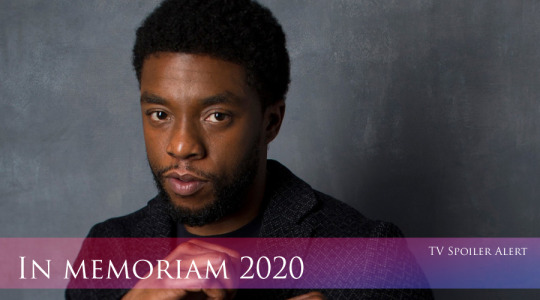
No puede terminar el año sin acordarnos de las numerosas personalidades del cine y la televisión que nos dejaron en 2020:
Olivia de Havilland (1/07/1916 - 26/07/2020)

Hija de la actriz Lilian Fontaine y de un abogado de patentes, nació en Tokio, pero a los tres años se mudó a California con su madre tras el divorcio de esta. Con una educación muy estricta, tuvo desde niña una pésima relación con su hermana Joan Fontaine, que se agravó en 1941 cuando ambas fueron nominadas al Oscar -ganó Fontaine- y se perdió totalmente con la muerte de su madre en 1975. En los 40, tras su sonada derrota, empezó a exigir a Warner papeles más jugosos y el estudio la sancionó con una suspensión de seis meses, tiempo perdido que quisieron recuperar al acabar su contrato. El asunto acabó en los juzgados con una decisión revolucionaria conocida todavía como la "ley de Havilland", gracias a la cual los actores solo pueden permanecer siete años bajo el mismo contrato. Ganadora del Oscar por To Each His Own (1946) y por The Heiress (1949) y nominada tres veces más por Gone with the Wind (1939), Hold Back the Dawn (1941) y The Snake Pit (1948), tiene varios récords gracias a su edad, como ser la ganadora del Oscar más longeva o la única protagonista de una película ganadora del Oscar en vivir para ver su 80 aniversario. Estaba retirada desde finales de los 80. En 2017 fue nombrada dama del imperio británico, y en el mismo año demandó a Ryan Murphy y a la cadena FX por la incorrecta y difamatoria representación de su figura, sin permiso ni compensación, en la serie Feud, aunque finalmente perdió, prevaleciendo la libertad de expresión de la Primera Enmienda. Con residencia habitual en París desde la década de los 50, falleció allí a los 104 años.
Sean Connery (25/08/1930 - 31/10/2020)
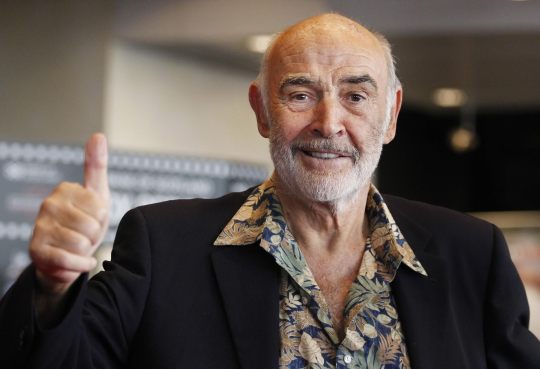
Nació en Edimburgo, Escocia. Su madre era limpiadora y su padre trabajaba en una fábrica. Fue lechero, camionero, albañil, modelo en una escuela de arte y culturista, e incluso pulió ataúdes. Le echaron de la Marina Real por problemas de salud. Dejó el fútbol a los veintitrés años para ser actor y a los treinta y dos se convirtió en el primer James Bond del cine, papel que interpretaría seis veces más, hasta 1983. Encadenó otros éxitos mientras tanto, como Marnie (1964), Murder on the Orient Express (1974) o Robin and Marian (1976); y después, como Highlander o Der Name der Rose; ganando el Oscar y el Globo de Oro por The Untouchables en 1988. Será recordado también por Indiana Jones and the Last Crusade (1989), The Hunt for Red October (1990), The Rock (1996) o Entrapment (1999). Fue elegido el hombre más atractivo del mundo por la revista People en 1989, y ocupó el decimocuarto puesto en la lista de las 100 estrellas más importantes del cine de todos los tiempos para la revista Empire en 1997. Pasaba grandes temporadas en su mansión de Marbella, pero los problemas con Hacienda le obligaron a marcharse a las Bahamas. Fue nombrado caballero del imperio británico y sir en el 2000. Su última película fue The League of Extraordinary Gentlemen (2003) y estaba retirado de la vida pública desde 2005. En sus últimos años padecía demencia senil. Falleció en su casa a los 90 años.
Naya Rivera (12/01/1987 - 8/07/2020)

De ascendencia puertorriqueña, afroamericana y alemana, nació en California. Participó, ya de bebé, en anuncios de televisión, y a los cuatro años interpretó a Hilary en la serie The Royal Family. Tuvo varios papeles episódicos o recurrentes entre los cinco y los veinte años. Hizo una audición para American Idol con la canción 'Emotion', de los Bee Gees, pero la eliminaron en la primera ronda, y estaba a punto de abandonar la interpretación cuando consiguió el papel de Santana en Glee (2009-2015), precisamente con la misma canción. Glee le valió dos premios ALMA a mejor cantante, en 2011 y 2012, sin haber publicado ningún disco y compitiendo contra Shakira, Jennifer López o Christina Aguilera. En 2016, publicó una autobiografía en la que contaba, entre otras cosas, que había sufrido anorexia en la adolescencia y que en 2010 se quedó embarazada del actor Ryan Dorsey, con quien ya había roto, y abortó para centrarse en su carrera. Cuatro años después, se casaron y tuvieron un hijo y un divorcio problemático. Después de Glee, pudimos verla en Devious Maids, disimulando su embarazo para el papel; o en Step Up: High Water, donde iba a tener un rol importante en su tercera temporada. Sufría de vértigos y mareos muy fuertes que controlaba con medicación. Confirmado por el testimonio de su propio hijo Josey, de cuatro años, Naya falleció intentando salvarlo de morir ahogado en el lago Piru, en California. Tenía 33 años.
Chadwick Boseman (29/11/1976 - 28/08/2020)

Nació en Carolina del Sur. Hijo de una enfermera y un tapicero, era aficionado al baloncesto y al boxeo. En sus años de universidad escribió, dirigió y actuó en tres obras de teatro sobre el hip hop. Se licenció en bellas artes especializándose en la dirección. Una de sus profesoras y mentoras fue la actriz Phylicia Rashad, que ayudó económicamente, junto a varios amigos como Denzel Washington, para que Boseman y otros compañeros pudieran estudiar en Oxford. También aprendió historia africana y afroamericana en Harlem. Tras varios papeles episódicos y alguna serie de corto recorrido, interpretó a Jackie Robinson, el primer jugador de béisbol afroamericano en la MLB, en 42 (2013); al cantante James Brown en Get on Up (2014); o a Thurgood Marshall, el primer afroamericano en la Corte Suprema, en Marshall (2017); pero su éxito mundial llegó con su entrada en la franquicia Avengers. Black Panther fue la primera película de Marvel en recuperar su presupuesto (doscientos millones de dólares) con la venta de entradas del primer fin de semana solamente en Estados Unidos (doscientos dos millones) y es la única película con protagonista negro o con reparto predominantemente negro en superar los mil millones de dólares en taquilla, récord conseguido en tan solo veintiséis días. Llevaba cuatro años padeciendo un cáncer de colon en etapa III. Falleció en el día de conmemoración de Jackie Robinson a los 43 años. Su última película fue Ma Rainey's Black Bottom (2020). Marvel anunció que ningún otro actor será Black Panther en futuras películas.
Diana Rigg (20/07/1938 - 10/09/2020)

Hija de un ingeniero ferroviario, vivió en la India desde los dos meses hasta los ocho años. Se inició en el teatro a los diecinueve y se unió a la Royal Shakespeare Company dos años después. Para entonces ya se habría graduado en la RADA de Londres. Entre 1965 y 1968 dio vida a la agente Emma Peel en la serie The Avengers, y fue chica Bond en On Her Majesty's Secret Service (1969). A los 33 años debutó en Broadway y, aunque recibió su primera nominación a los Tony, tuvo una crítica tan demoledora del autor John Simon que decidió coleccionar las peores críticas, tanto de ella como de otros compañeros, y publicarlas en un libro en 1982. Protagonizó Theater of Blood (1972), que consideraba su mejor película, o Evil Under the Sun (1982). Fue también la enigmática Christine Vole en la tv movie Witness for the Prosecution (1982). Se graduó honoris causa dos veces: en 1988 en la Universidad de Stirling, en Escocia, donde posteriormente sería canciller entre 1998 y 2008; y en 1992 en la Universidad de Leeds. Por sus servicios como actriz, fue nombrada comandante del Imperio Británico en 1988 y dama en 1994. En ese mismo año consiguió el Tony por protagonizar Medea. En 2003 ganó las demandas a dos periódicos que publicaron que era una mujer amargada que despreciaba a los hombres británicos. Ganadora de un Emmy por interpretar a Mrs. Danvers en la miniserie adaptación de Rebecca (1977), fue nominada ocho veces más, dos de ellas por The Avengers y cuatro por su papel de Lady Ollenna Tyrell en Game of Thrones (2013-2017). Falleció en su casa a los 82 años.
Kirk Douglas (9/12/1916 - 5/02/2020)

Hijo de inmigrantes de la actual Bielorrusia, nació en una pequeña ciudad del estado de Nueva York. Su nombre real era Issur Danielovitch Demsky. Era buen estudiante y atleta, y se costeó los estudios con la lucha profesional y trabajando como repartidor de periódicos, camarero o botones. Una beca le ayudó a entrar en la American Academy of Dramatic Arts y debutó en Broadway antes de que la Segunda Guerra Mundial le enviara a la Armada. Lauren Bacall, compañera de clase, insistió para que, a sus treinta años, le hicieran su primera prueba para un papel en el cine. Protagonizó ocho películas junto a Burt Lancaster entre 1947 y 1986. Nominado al Oscar por Champion (1949), The Bad and the Beautiful (1952) y Lust for Life (1956), las dos últimas dirigidas por Vincente Minnelli, quizá sea recordado principalmente por Paths of Glory (1957) y Spartacus (1960). En 1963 protagonizó la obra One Flew Over the Cuckoo's Nest, pero ningún estudio quiso llevar a cabo una adaptación cinematográfica. Finalmente, fue su hijo Michael Douglas quien produjo la galardonadísima película de 1975. A partir de 1963 fue embajador de buena voluntad para el Departamento de Estado de Estados Unidos y en 1964 creó, junto a su segunda esposa, la Fundación Douglas, una organización benéfica que apoya, entre otros proyectos, a un hospital infantil o a una congregación judía conservadora y concede becas a estudiantes desfavorecidos. Recibió la Medalla Presidencial de la Libertad en 1981 y el Premio Jefferson en 1983 por sus labores humanitarias. En 1986 le pusieron un marcapasos tras sufrir un colapso en un restaurante, en 1991 sobrevivió a un accidente de helicóptero en el que murieron los otros dos ocupantes y en 1996 tuvo un derrame cerebral que le afectó severamente al habla. Ese mismo año recibió el Oscar honorífico. Hasta 2008 hizo aún cuatro películas más. Murió con 103 años. Dejó la mayoría de su fortuna a su fundación.
Rosa María Sardà (30/07/1941 - 11/06/2020)
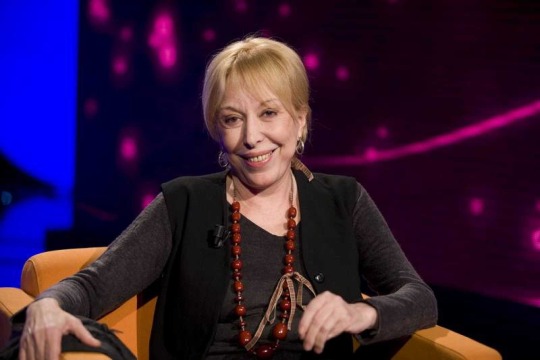
Nacida en Barcelona, era hija de un campesino y de una enfermera. Comenzó con el teatro amateur en su barrio y en 1962 se pasó al profesional. Tras su llegada a la televisión, como actriz y también como presentadora, debutó en el cine con El vicario de Olot (1980). Estuvo nominada al Goya en tres ocasiones, siendo ella misma la presentadora en las tres y aportando un notable aumento de audiencia con respecto a años anteriores -a ella le debemos el humor característico de las galas actuales- y ganó por ¿Por qué lo llaman amor cuando quieren decir sexo? (1993) y Sin vergüenza (2001). Otros trabajos destacados son Moros y cristianos (1987), El efecto mariposa (1995), Actrius (1997), La niña de tus ojos (1999), Todo sobre mi madre (1999), Anita no pierde el tren (2001) o A mi madre le gustan las mujeres (2002). Compaginando hasta el final las labores de presentadora con la actuación e incluso la dirección, tanto en televisión como en teatro, recibió en 2010 la Medalla de Oro de la Academia de Cine y en 2016 el premio Feroz de honor de manos de su hermano, el presentador Xavier Sardá. En 2017 renunció a la Cruz de Sant Jordi que la Generalitat de Catalunya le había concedido en 1994 porque, decía, "dadas las circunstancias" (presumiblemente políticas) no se consideraba merecedora. Iba a recibir el premio homenaje en los Fotogramas de Plata en una gala que se suspendió por la pandemia. Falleció por culpa de un cáncer, enemigo siempre invencible según ella, a los 78 años.
Max von Sydow (10/04/1929 - 8/03/2020)

Nació en Suecia dentro de una familia de aristócratas. Hijo de una maestra y un etnólogo, su nombre real era Carl Adolf von Sydow. En el instituto formó un club de teatro con sus compañeros de clase, incluida la actriz Yvonne Lombard. Estudió en el Dramaten de Estocolmo, donde también se habían formado Greta Garbo o Ingrid Bergman, y trabajó en los teatros de Norrköping y Malmö después de graduarse, pero para entonces ya había debutado en el cine. Se convirtió en el actor fetiche de Ingmar Bergman, llegando a participar en trece de sus películas, las tres primeras en 1957 y las tres siguientes en 1958. La primera de ellas fue Det sjunde inseglet, donde su personaje juega al ajedrez contra la parca. Dio el salto a Hollywood en 1965 con The Greatest Story Ever Told, y ha dado vida a personajes muy diferentes en The Exorcist (1973), Three Days of the Condor (1975), Flash Gordon (1980), Never Say Never Again (1983), Dune (1984), Hannah and Her Sisters (1986), Minority Report (2002) o Shutter Island (2010). Es el único actor sueco que ha sido nominado al Oscar, y lo estuvo por Pelle erobreren (1987) y por Extremely Loud & Incredibly Close (2012). Interpretó al apóstol Pedro en la miniserie Quo Vadis? (1985) y al cuervo de tres ojos en Game of Thrones (2016). Falleció a causa de un infarto en su residencia de la Provenza, en Francia, a los 90 años.
Lucía Bosé (28/01/1931 - 23/03/2020)
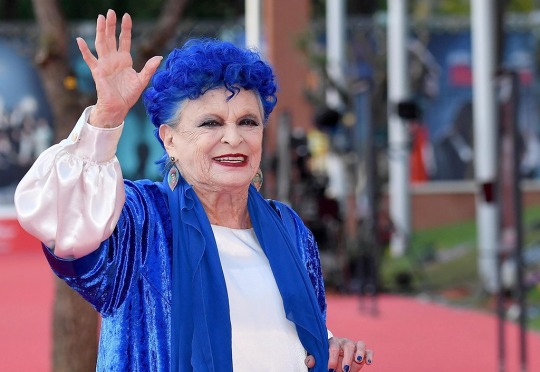
Lucia Borlani Bosè nació en Milán y creció durante el fascismo italiano en una familia de campesinos. Trabajó en la pastelería familiar durante varios años, donde fue descubierta por el director Luchino Visconti. A los dieciséis ganó el concurso de Miss Italia, y comenzó en el cine en 1950. Trabajó para Fellini o para Buñuel, pero sus películas más conocidas podrían ser Le ragazze di Piazza di Spagna (1952), Gli sbandati (1955) y Muerte de un ciclista (1955). En el viaje a España, para grabar la película, conoció al torero Luis Miguel Dominguín, con quien se casó en Las Vegas ese mismo año, y dejó prácticamente aparcada su carrera hasta su divorcio, doce años después. Son los padres del cantante Miguel Bosé, cuyo padrino fue Visconti. En 1976 se estrenaba su serie La señora García se confiesa. En los ochenta dejó de lado el cine y la televisión para centrarse en la poesía, la pintura y lo espiritual. A finales de los 90 se trasladó a Brieva, un pequeñísimo pueblo de Segovia, para alejarse del mundo, y en el 2000 abrió el primer museo del mundo dedicado a los ángeles, por los que sentía fascinación, en Turégano, otro pueblo cercano. A finales de 2019 presentó su biografía en Roma durante la XIV edición de la Fiesta del Cine. Falleció en Brieva por culpa de una neumonía derivada del coronavirus a los 89 años.
Ian Holm (12/09/1931 - 19/06/2020)

Hijo de una enfermera y un psiquiatra, ambos escoceses y trabajadores de un hospital psiquiátrico de Essex, debutó en el teatro en 1954 con Othello. Participó en representaciones de las obras principales de Shakespeare con la Royal Shakespeare Company y ganó el Tony en 1967 en su debut en Broadway. Desarrolló un pánico escénico severo en 1976 y abandonó el teatro, al que solo regresó tres veces desde entonces, lo que le serviría para ganar el Olivier en 1998 con King Lear. Nominado al Oscar y ganador del BAFTA por Chariots of Fire en 1981, ha participado también en Robin and Marian (1976), Alien (1979), Brazil (1985), Frankenstein (1994) o The Fifth Element (1997). Fue nombrado comandante del Imperio Británico en 1989 y sir, por sus servicios como actor, en 1998. Entre 2001 y 2014, interpretó a Bilbo Baggins en la saga de The Lord of the Rings. Falleció por complicaciones derivadas de la enfermedad de Parkinson a los 88 años.
*
Otros intérpretes que han fallecido este año:
Terry Jones (1942-2020): Monty Python
Phyllis Somerville (1943-2020): The Big C, Outsiders
Orson Bean (1928-2020): Desperate Housewives, Dr. Quinn, Medicine Woman
Carl Reiner (1922-2020): Hot in Cleveland, The Dick Van Dyke Show
Irrfan Khan (1967-2020): In Treatment
Kelly Preston (1962-2020)
Jerry Stiller (1927-2020): The King of Queens, Seinfeld
Sam Lloyd (1963-2020): Scrubs, Desperate Housewives
Fred Willard (1933-2020): Modern Family
Conchata Ferrell (1943-2020): Two and a Half Men
Brian Dennehy (1938-2020): Hap and Leonard, Public Morals
Mary Pat Gleason (1950-2020): Mom, Will & Grace, Desperate Housewives
Mary Begoña (1925-2020): Hostal Royal Manzanares
Logan Williams (2003-2020): The Flash, When Calls the Heart
Lorenzo Brino (1998-2020): 7th Heaven
Eddie Hassell (1990-2020): Devious Maids
Shirley Knight (1936-2020): Desperate Housewives
Anthony Chisholm (1943-2020): Oz
Filipe Duarte (1973-2020): Matadero, Belmonte
Marcos Mundstock (1942-2020)
Montserrat Carulla (1930-2020): Crematorio
Jordi Mestre (1981-2020): Centro médico
Pepe Martín (1932-2020): Géminis, venganza de amor
Stan Kirsch (1968-2020): Highlander
John Karlen (1933-2020): Cagney & Lacey
Marsha Kramer (1945-2020): Modern Family
Robert Conrad (1935-2020): Jim West, Hawaiian Eye
Ron McLarty (1947-2020): Spenser: For Hire
Lynn Cohen (1933-2020): Sex and the City
Jason Davis (1984-2020): Recess
Ann E. Tood (1931-2020): The Stu Erwin Show
Kellye Nakahara Wallett (1948-2020): M*A*S*H
Esther Scott (1953-2020): Hart of Dixie
Claudette Nevins (1937-2020): Melrose Place
Roscoe Born (1950-2020): One Life to Live, Santa Barbara
Marj Dusay (1936-2020): The Guiding Light, All My Children
Lyle Waggoner (1935-2020): Wonder Woman, The Carol Burnett Show
Mark Blum (1950-2020): Mozart in the Jungle
John Callahan (1953-2020): Falcon Crest, All My Children
David Schramm (1946-2020): Wings
Shirley Douglas (1934-2020): Wind at My Back
Forrest Compton (1925-2020): The Edge of Night
Tim Brooke-Taylor (1940-2020): The Goodies
B.J. Hogg (1955-2020): The Fall, Give Me Head Peace
Michael Keenan (1939-2020): Picket Fences, Dallas
Ken Osmond (1943-2020): Still the Beaver
John Patrick Mahon (1938-2020): Studio 60
Marge Redmond (1924-2020): The Flying Nun
Sushant Singh Rajput (1986-2020): Pavitra Rishta
Linda Cristal (1931-2020): Rossé, El gran chaparral
Carme Contreras (1932-2020): El cor de la ciutat
Louis Mahoney (1938-2020): Counterpart
Brandis Kemp (1944-2020): Fridays
John Saxon (1936-2020): Falcon Crest, Dynasty
Wilford Brimley (1934-2020): Our House
Richard Herd (1932-2020): Seinfeld
James Drury (1934-2020): The Virginian
Honor Blackman (1925-2020): The Avengers, The Upper Hand
Abby Dalton (1932-2020): Falcon Crest, Hennesey
Marguerite Ray (1931-2020): The Young and the Restless
Victoria Racimo (1950-2020): Falcon Crest
Barbara Windsor (1937-2020): EastEnders, Carry On
Ben Cross (1947-2020): Banshee, Pandora
Manuel Gallardo (1935-2020): Verano azul
Kevin Dobson (1943-2020): Kojak, California
José Antonio Lobato (1956-2020): El Continental, El Ministerio del Tiempo
Nathalie Desselle-Reid (1967-2020): Eve
Takeuchi Yûko (1980-2020): FlashForward, Queen
Archie Lyndhurst (2000-2020): So Awkward
Thomas Jefferson Byrd (1950-2020): She's Gotta Have It
Armelia McQueen (1952-2020): Hart of Dixie, Adventures in Wonderland
Clark Middleton (1957-2020): The Path, The Blacklist
Bobby Ball (1944-2020): Not Goint Out, Mount Pleasant
Bert Belasco (1982-2020): Pitch, I'm Dying Up Here
Dave Prowse (1935-2020)
Jeremy Bulloch (1945-2020)
Jackie Stallone (1921-2020)
Ann Reiking (1949-2020)
Peg Murray (1924-2020)
*
Rebecca Luker (1961-2020)
Tom Long (1968-2020)
Edd Byrnes (1932-2020)
Harry Hains (1992-2020)
Norma Michaels (1924-2020)
William Bogert (1936-2020)
Jack Kehoe (1934-2020)
Joe Shishido (1933-2020)
Dyanne Thorne (1936-2020)
Paula Kelly (1942-2020)
Raphaël Coleman (1994-2020)
Nikita Pearl Waligwa (2004-2020)
Ja'net DuBois (1932-2020)
Zoe Caldwell (1933-2020)
Baby Peggy (1918-2020)
Ben Cooper (1933-2020)
Nick Apollo Forte (1938-2020)
Joyce Gordon (1929-2020)
Monique van Vooren (1927-2020)
Jack Burns (1933-2020)
Kevin Conway (1942-2020)
R.D. Call (1950-2020)
Nicholas Tucci (1981-2020)
Suzy Delair (1917-2020)
Stuart Whitman (1928-2020)
Nicholas Parsons (1923-2020)
Allen Garfield (1939-2020)
Ken Shimura (1950-2020)
Andrew Jack (1944-2020)
Patricia Bosworth (1933-2020)
Lee Fierro (1929-2020)
Jay Benedict (1951-2020)
Dieter Laser (1942-2020)
Hilary Heath (1945-2020)
Timmy Brown (1937-2020)
Danny Goldman (1939-2020)
Ranjit Chowdhry (1955-2020)
Tom Lester (1938-2020)
Gene Dynarski (1933-2020)
Dimitri Diatchenko (1968-2020)
Jill Gascoine (1937-2020)
Rishi Kapoor (1952-2020)
John Ericson (1926-2020)
Antonio Bolívar (1945-2020)
Norma Doggett (1925-2020)
Geno Silva (1948-2020)
Michael Piccoli (1925-2020)
Monique Mercure (1930-2020)
Gregory Tyree Boyce (1989-2020)
Jon Whiteley (1945-2020)
Skye Aubrey (1945-2020)
Lee Wallace (1930-2020)
Hagen Mills (1990-2020)
Marisa de Leza (1933-2020)
Claude Brasseur (1936-2020)
Alba Greco (1969-2020)
Anthony James (1942-2020)
Peggy Pope (1929-2020)
Mel Winkler (1941-2020)
Danny Hicks (1951-2020)
Earl Cameron (1917-2020)
Nick Cordero (1978-2020)
Galyn Görg (1964-2020)
Haruma Miura (1990-2020)
Royana Black (1973-2020)
Jacqueline Scott (1931-2020)
Sonia Darrin (1924-2020)
Reni Santoni (1938-2020)
Brent Carver (1951-2020)
Franca Valeri (1920-2020)
Raymond Allen (1929-2020)
Trini López (1937-2020)
Linda Manz (1961-2020)
Mary Hartline (1927-2020)
Lori Nelson (1927-2020)
Allan Rich (1926-2020)
Caesar Cordova (1936-2020)
Marcus Smythe (1950-2020)
Sei Ashina (1983-2020)
Oh In-Hye (1984-2020)
Alien Huang (1983-2020)
Michael Lonsdale (1931-2020)
Margaret Nolan (1943-2020)
Rhonda Fleming (1923-2020)
Doreen Montalvo (1963-2020)
Carol Arthur (1935-2020)
Elsa Raven (1929-2020)
Geoffrey Palmer (1927-2020)
John Fraser (1931-2020)
Lawrence Clayton (1956-2020)
Asif Basra (1967-2020)
Lynn Kellogg (1943-2020)
Soumitra Chatterjee (1935-2020)
Broselianda Hernández (1964-2020)
Kirby Morrow (1973-2020)
Dena Dietrich (1928-2020)
Jery Hewitt (1949-2020)
Daria Nicolodi (1950-2020)
Hugh Keays-Byrne (1947-2020)
Warren Berlinger (1937-2020)
Pamela Tiffin (1942-2020)
Tommy 'Tiny' Lister (1958-2020)
David Lander (1947-2020)
Carol Sutton (1933-2020)
Bob Kaliban (1933-2020)
Ned Wynn (1941-2020)
Luis Gerardo Rivera (1991-2020)
Jorge Navarro (1975-2020)
Félix Casas (1930-2020)
Esteban Yáñez (1984-2020)
Sebastián Athié (1995-2020)
Daniel Alvarado (1949-2020)
*
En otros ámbitos del mundo audiovisual, también nos tocó despedir a los directores José Luis Cuerda (Amanece que no es poco, La lengua de las mariposas), Kim Ki-duk (Bin-jip, Hwal), Joel Schumacher (The Number 23, Phone Booth), Lynn Shelton (Little Fires Everywhere, GLOW), George Ogilvie (Mad Max Beyond Thunderdome), Alan Parker (Evita, Fame), David Rodríguez (Animal Kingdom, The Chi), Peter H. Hunt (Touched by an Angel), Kelly Asbury (Shrek 2), John Lafia (Child's Play 2), Nobuhiko Ôbayashi, Sachy, Tonie Marshall, Jirí Menzel, Ivan Passer, Alan Metter, Valentina Pedicini, Art Wolff y James Redford; los guionistas William Blinn (Starsky and Hutch, Eight is Enough), Joe Ruby (Scooby Doo, Alvin & the Chipmunks), Ken Spears (Scooby Doo, Alvin & the Chipmunks), Malcolm Marmorstein (Pete's Dragon), Ronald Harwood (The Pianist, Le scaphandre et le papillon), Dana Baratta (Jessica Jones, Dawson's Creek), Buck Henry (Get Smart); Lee Philip Bell (The Young and the Restless, The Bold and the Beautiful), Jas Waters (This Is Us, Kidding), Silvio Horta (Ugly Betty, P-Valley), Josep María Benet i Jornet (Amar es para siempre, Ventdelplà), Camila María Concepción (Gentefied, Daybreak), Murray Schisgal (Tootsie), Robert Garland (Tootsie, Le grand bleu), Kit Hood (Degrassi), Gene Reynolds (Lou Grant, M*A*S*H), Earl Pomerantz (The Cosby Show, Cheers), Charlie Hauck (Maude, Home Improvement), Harriet Frank Jr. (Norma Rae, Hud), Stuart Gordon (Honey, I Shrunk the Kids), Kurt Luedtke (Out of Africa), Scott Marshall Smith (Men of Honor), Larry Kramer (The Normal Heart), Roger Beatty (The Carol Burnett Show), Bruce Jay Friedman (Splash), Jeremy Stevens (Coach, Everybody Loves Raymond), Colo Tavernier, Steve Kreinberg, Lewis John Carlino, Bettina Gilois, Richard Fielder, Guy Thomas, Loring Mandel, James S. Henerson y Terrence McNally; los compositores Ennio Morricone, Johnny Mandel, Krzysztof Penderecki, Duane Tatro, Adam Schlesinger, Billy Goldenberg y Bob Cobert; los letristas Herbert Kretzmer (Les Misérables) y Al Kasha (Pete's Dragon); los animadores Ann Sullivan (The Lion King, Pocahontas), Doug Crane (Beavis and Butt-Head, Spider-Man), Tuck Tucker (SpongeBob SquarePants, Rugrats) y Gene Deitch (Obri); los productores William Bernstein (Forrest Gump. Titanic), David Giler (Alien, Tales from the Crypt), Thomas L. Miller (Family Matters, Full House), Fred Silverman (Diagnosis Murder, In the Heat of the Night), Charles Gordon (Die Hard, Hitman), Tom Pollock (Ghostbusters, Road Trip), Edward S. Feldman (The Truman Show, The Jungle Book), Jörn Donner (Fanny och Alexander), Ronald L. Schwary (Medium), Grazia Volpi (Cesare deve morire), Kevin Burns (Lost in Space, Poseidon), Joel Rogosin (The Virginian, Ironside), Roger Berlind (The Book of Mormon, Dear Evan Hansen), Stuart Cornfeld, Jane Milmore, Steve Bing, Dorothea G. Petrie, Gene Corman, Sydney Lotterby, Tony Garnett, Ash Christian, Herbert F. Solow y Larry Rosen; los directores de fotografía Michael Chapman (Taxi Driver, Space Jam), Allen Daviau (Empire of the Sun, E.T. the Extra-Terrestrial), Peter Sova (Lucky Number Slevin, The Strangers) y Kent L. Wakeford; el editor Donald Douglas (Murder, She Wrote; The Flintstones); el diseñador de producción Peter Lamont (Titanic, Aliens); los diseñadores de vestuario Bhanu Athaiya (Gandhi) y Robert DeMora (Risky Business); los coreógrafos Marge Champion y Tony Charmoli; el doble de acción Ernie Orsatti; la diseñador gráfico Sandy Dvore; el ilustrador Paul Crifo; la productora de efectos especiales Rebecca Ramsey o los actores de doblaje César Arias y Salvador Vives.
Otros personajes conocidos que han fallecido son los cantantes Luis Eduardo Aute, Pau Donés, Little Richard, Kenny Rogers, Wayne Fontana, Tommy DeVito, Benny Mardones, Flor Silvestre, Jahn Teigen, Chad Stuart, K.T. Oslin, Hal Ketchum, Betty Wright, Annie Ross, Helen Reddy, Peter Green, Johnny Nash, Nikki McKibbin, Billy Joe Shaver, Sam Jayne, Tony Lewis, Bobby Lewis, Jerry Jeff Walker, Spencer Davis, Vera Lynn, Charley Pride, Cady Groves, Rosalind Elias, Bonnie Pointer, Alan Merrill, Jan Howard, Joe Diffie, John Prine, Bill Withers, David Olney, Troy Sneed, India Adams, Emitt Rhodes, Justin Townes Earle, Riley Gale, Bruce Williamson, Ronald Khalis Bell, Brian Howe, Roy Head, Juliette Gréco, Mac Davis, S.P. Balasubrahmanyam, Doug Supernaw y Toots Hibbert; los escritores John le Carré, Mary Higgins Clark, Carlos Ruiz Zafón, Luis Sepúlveda, James E. Gunn, Juan Marsé, Elizabeth Wurtzel, Lan O'Kun, Joanna Cole, Charles Webb, Gail Sheehy, Jan Morris y Charles Portis; los historietistas Quino (Mafalda), Albert Uderzo (Astérix) y Fer (Puticlub), los músicos Eddie Van Halen, Hamilton Bohannon, Florian Schneider, Jorge Santana, Leslie West, Pedro Iturralde, Manu Dibango, Tony Rice y McCoy Tyner; el bailarín Tommy Rall; el DJ Erick Morillo; el pintor y esculturista Antonio Otazzo; los comediantes John Sessions, Norm Crosby y Héctor Suárez; el barítono Claude Heater; los presentadores Regis Philbin, Alex Trebek, Caroline Flack y Grant Imahara; el diseñador Kenzō Takada; el periodista Michael Robinson; la jueza Ruth Bader Ginsburg; el político Julio Anguita; la artista Carmen de Mairena; la drag queen Chi Chi DeVayne; los raperos Lil Marlo, Malik B., Mo3, King Von, Lexxi Alijai, Pop Smoke, Saint Dog, John Fletcher y Fred the Godson; el ilusionista James Randi; el jugador de baloncesto Kobe Bryant; los futbolistas Diego Armando Maradona y Paolo Rossi; el jugador de béisbol Phil Niekro; los luchadores James "Kamala" Harris, Stevie Lee (Jackass), Hana Kimura, Pat Patterson y Jon Huber; y la motociclista Sara Lenzi.
0 notes
Text
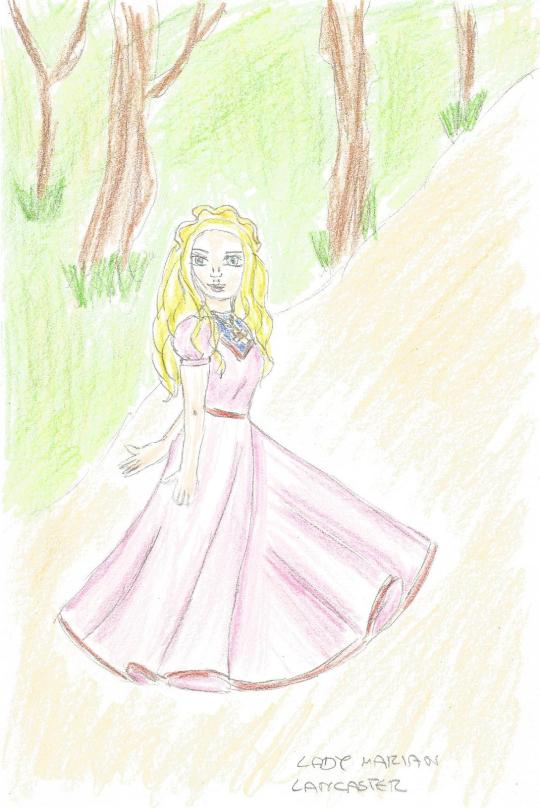
Lady Marian Lancaster principessa dell' anime Robin Hood. Adoro il suo vestito rosa confetto e un giorno lo so, farò il suo cosplay

0 notes
Photo

Lancaster University's MA Human Resources & Consulting: Careers, Learning and Development Dr Marian Iszatt-White talks about the Careers, Learning and Development module on Lancaster's MA Human Resources and Consulting programme. Find out more about the course on our website. www.lancaster.ac.uk/lums/study/masters/programmes/ma-hr-consulting/
0 notes
Text
Look what I found at Adiamor!
Look what I found at Adiamor!
Emerald Jewelry Twisted sapphires Dina Staggs Dina Staggs Marian Lancaster-Weston
18K White Gold Three Stone Diamond and Sapphire Trellis Ring from Brilliant Earth Potential settingJanell Johnson Dominique Alexis Barbara Monica Geller-Bing “Friends”: Princess Cut Blue Sapphires & Princess Cut Diamonds White Gold Engagement Ring 🙂 <3
Refer: http://www.adiamor.com/Engagement-Rings/Sapphire/Sapphir…
View On WordPress
1 note
·
View note